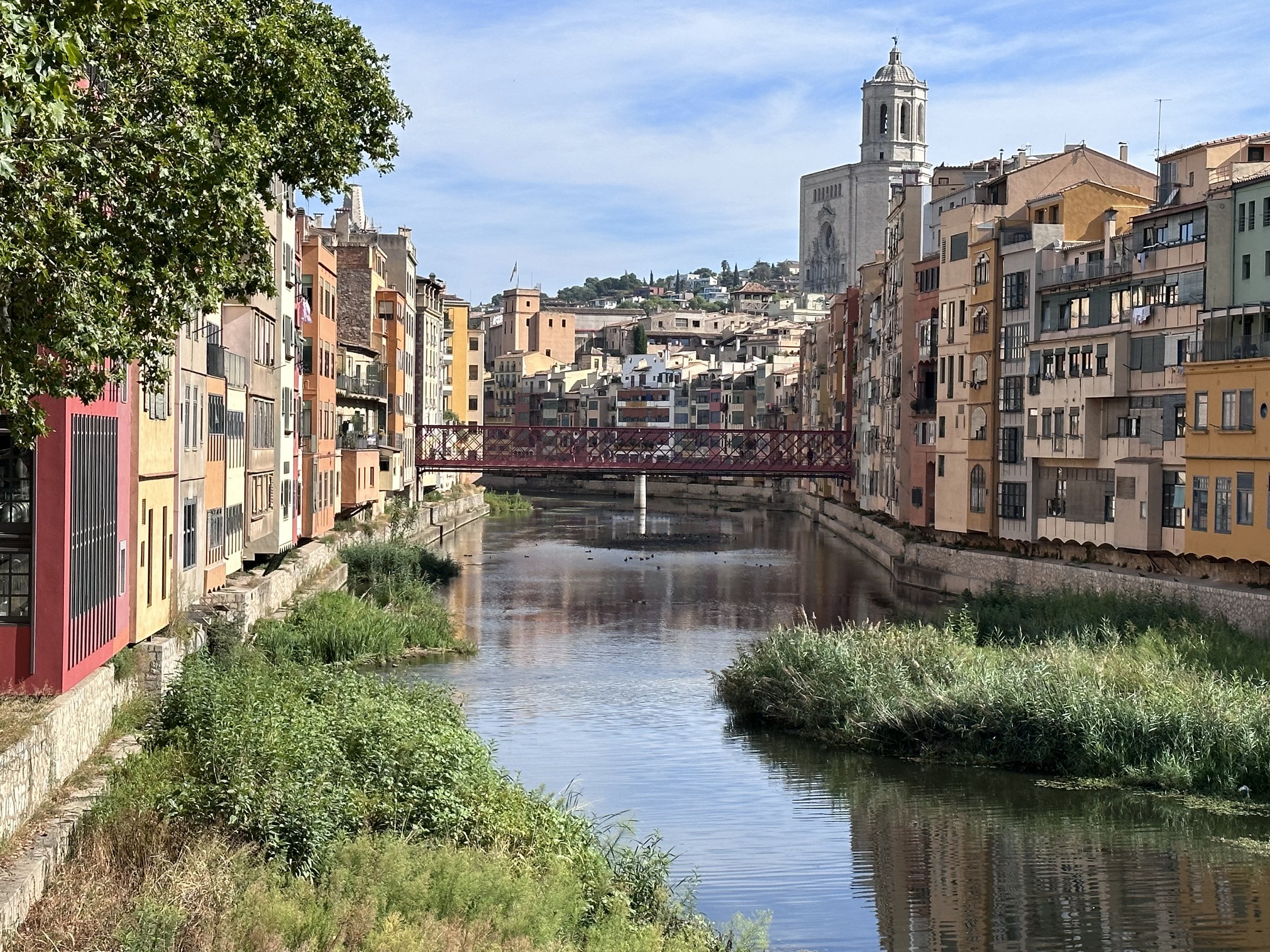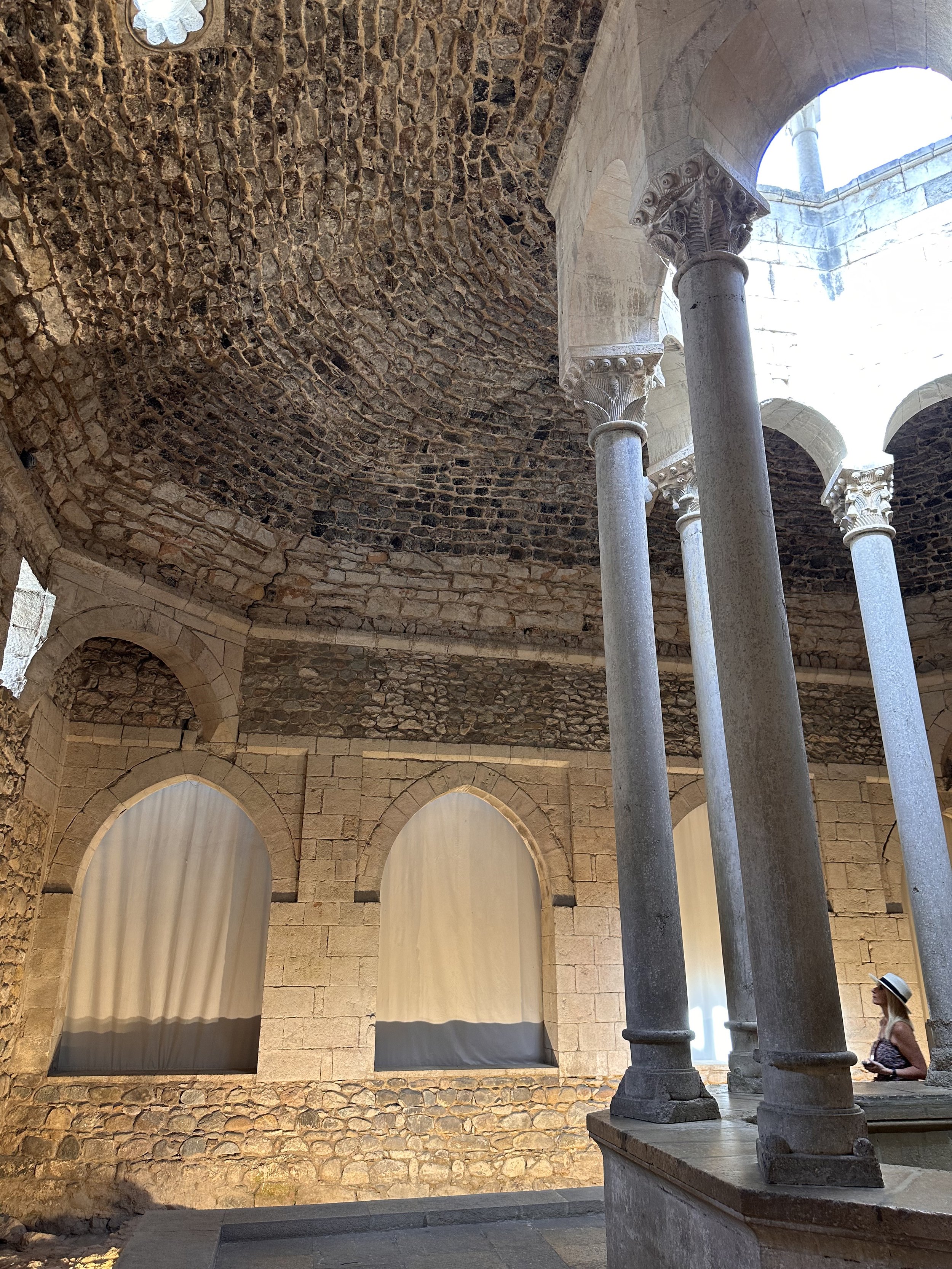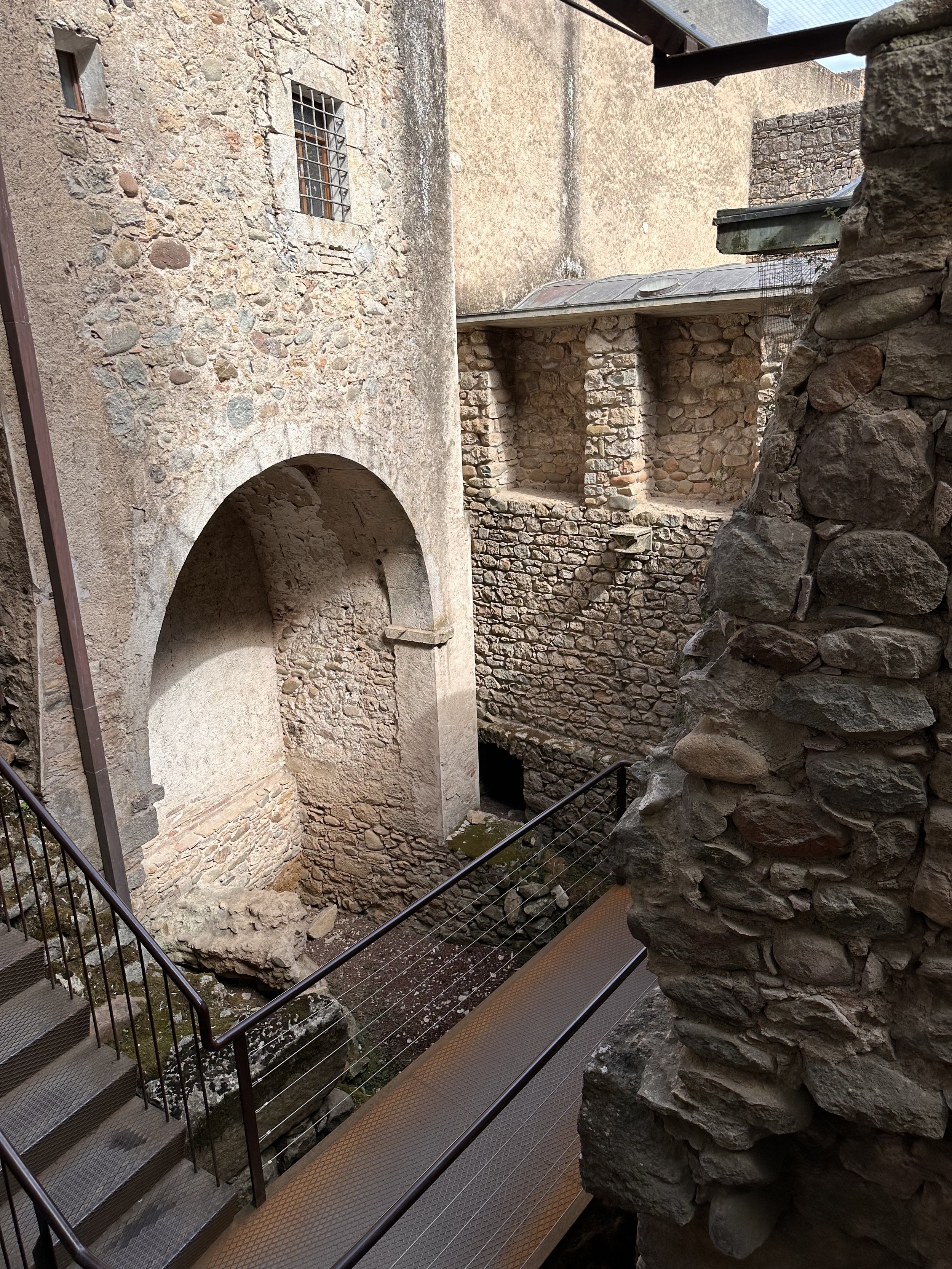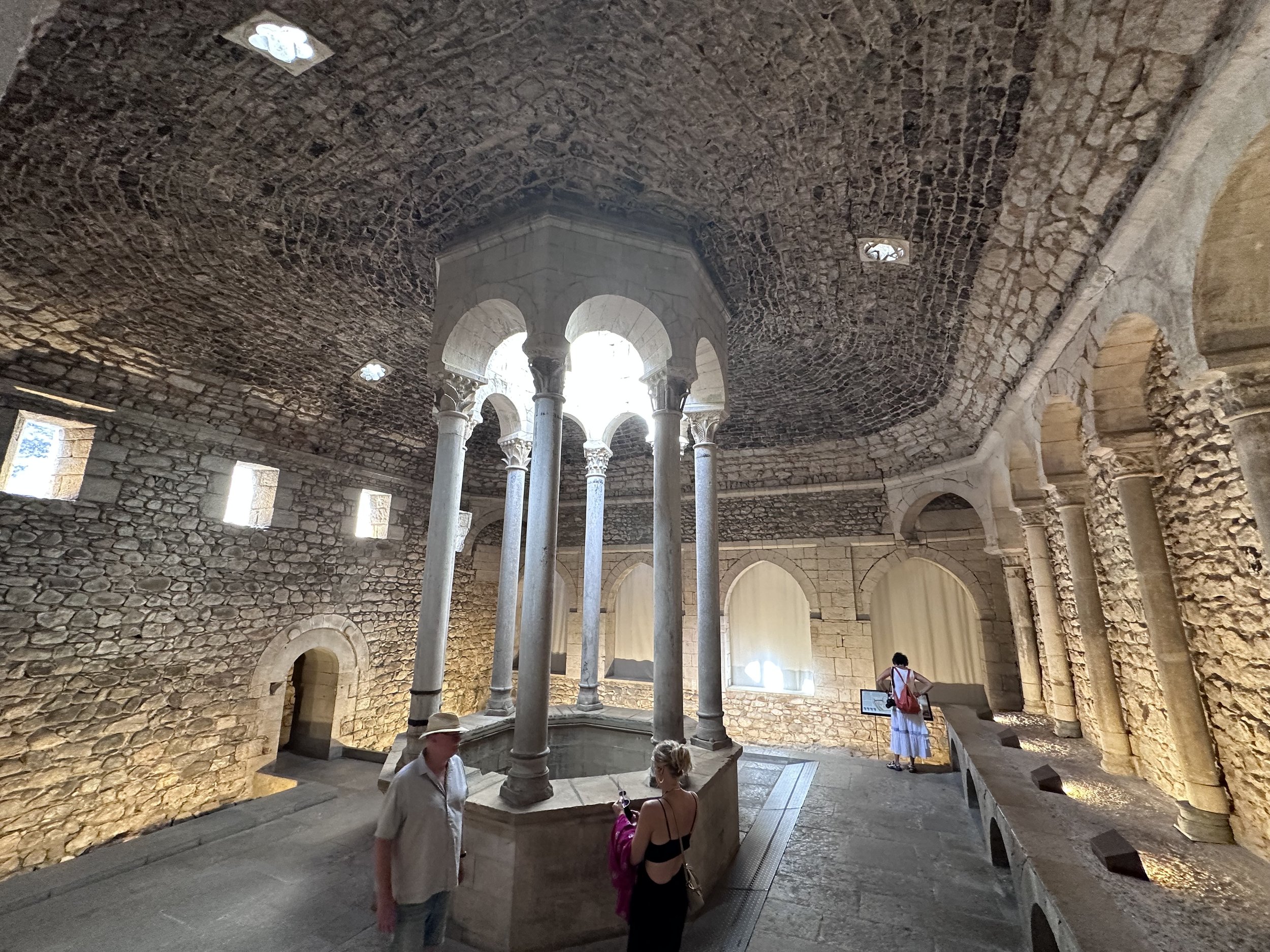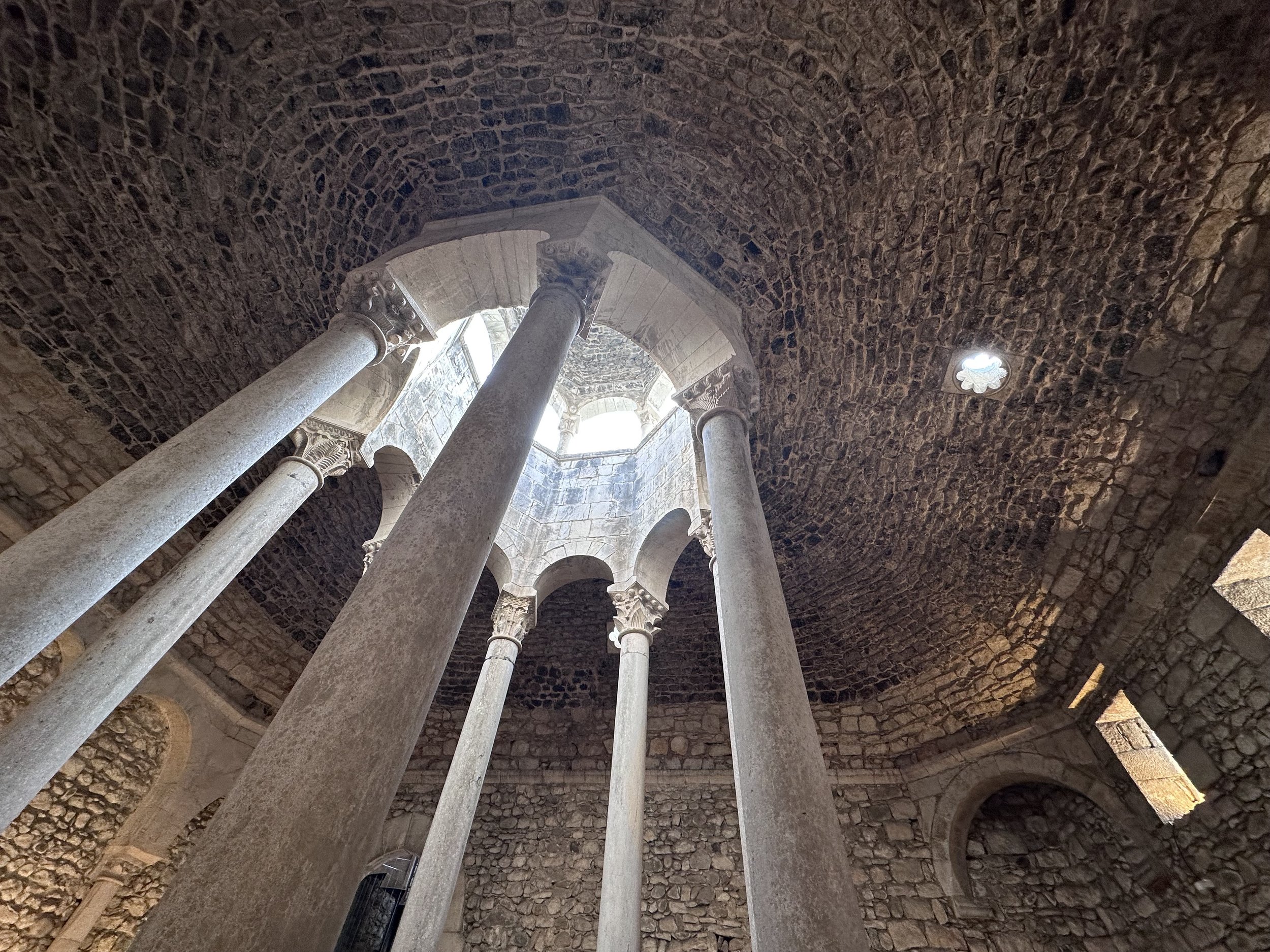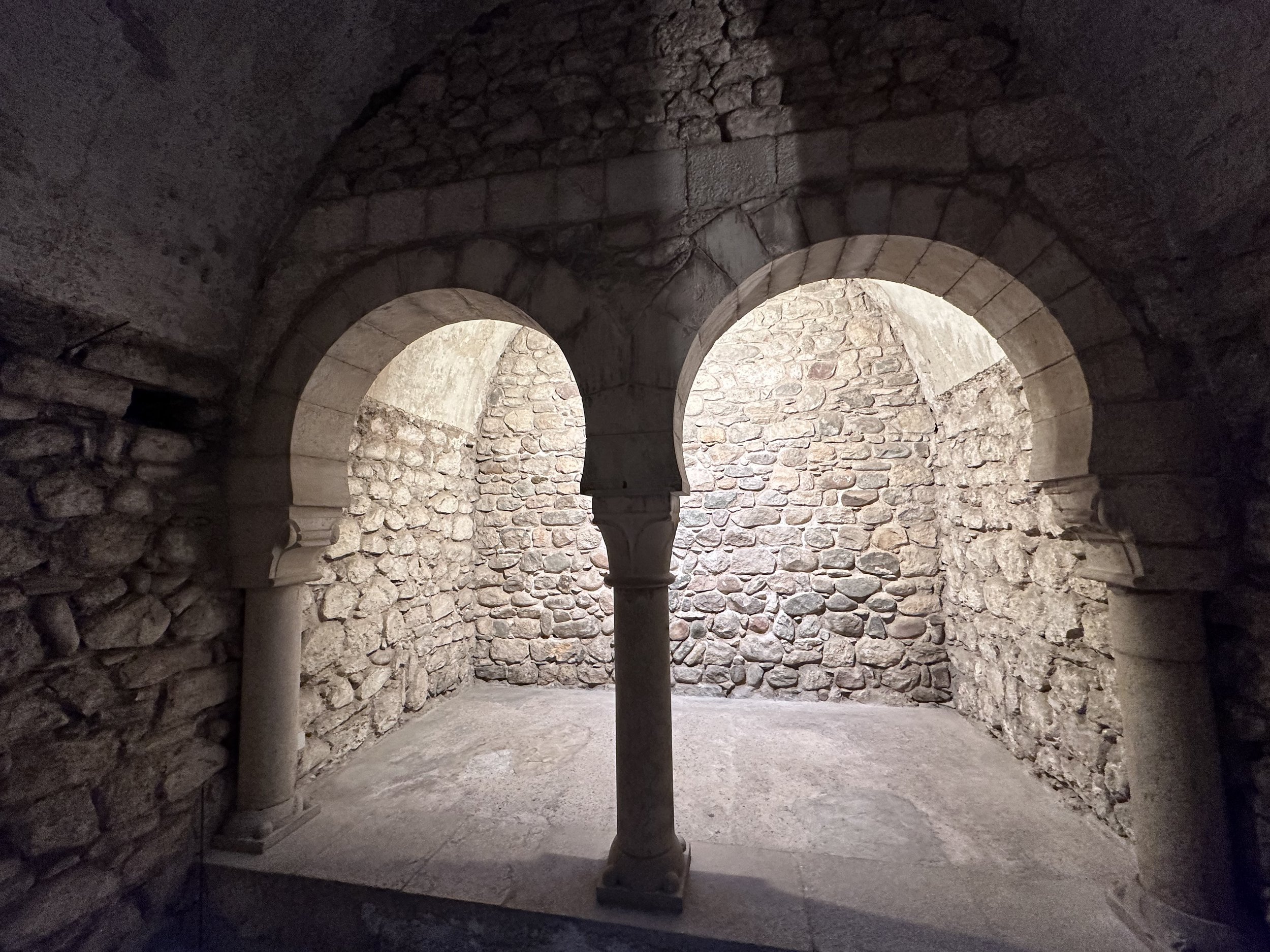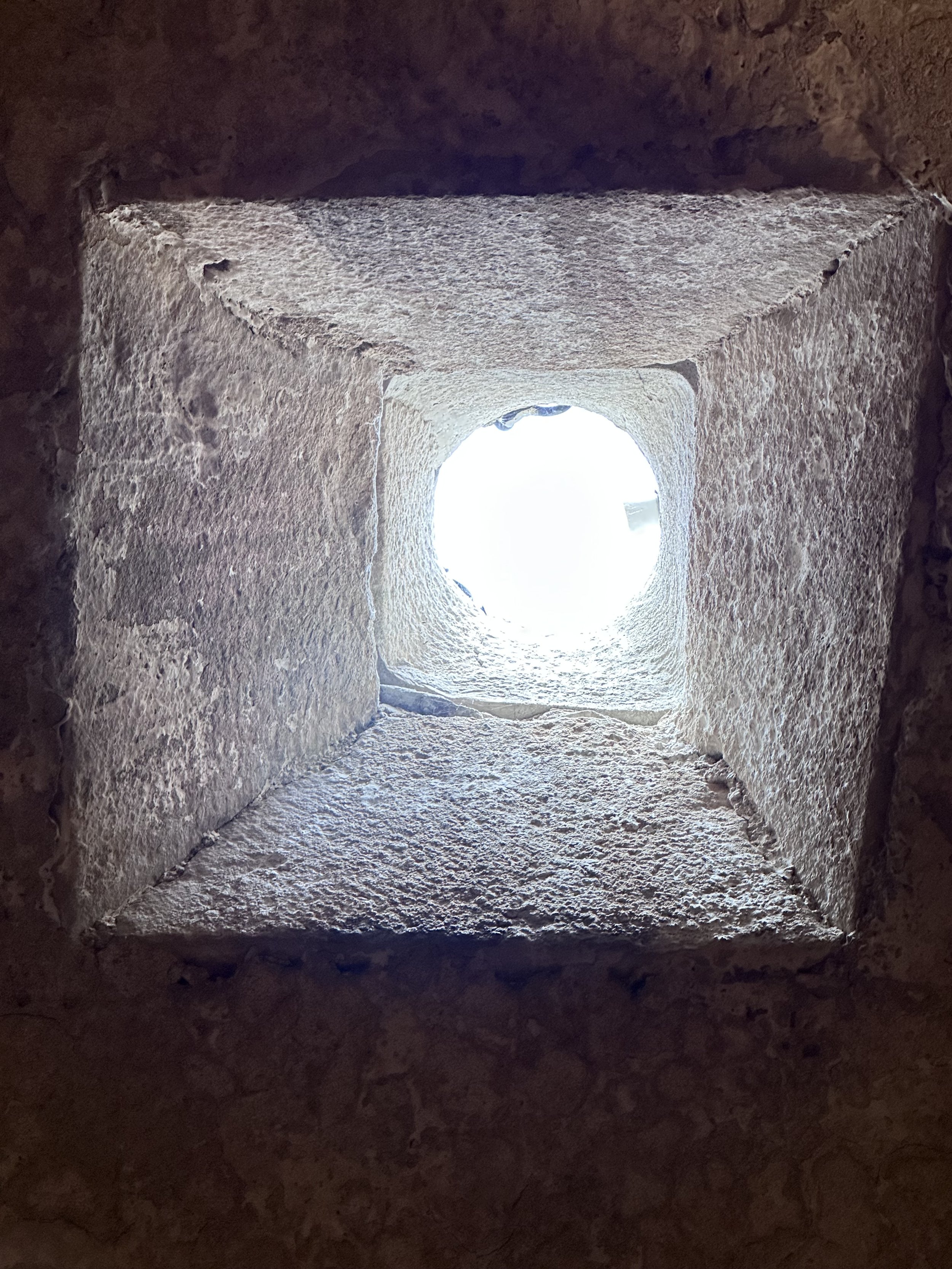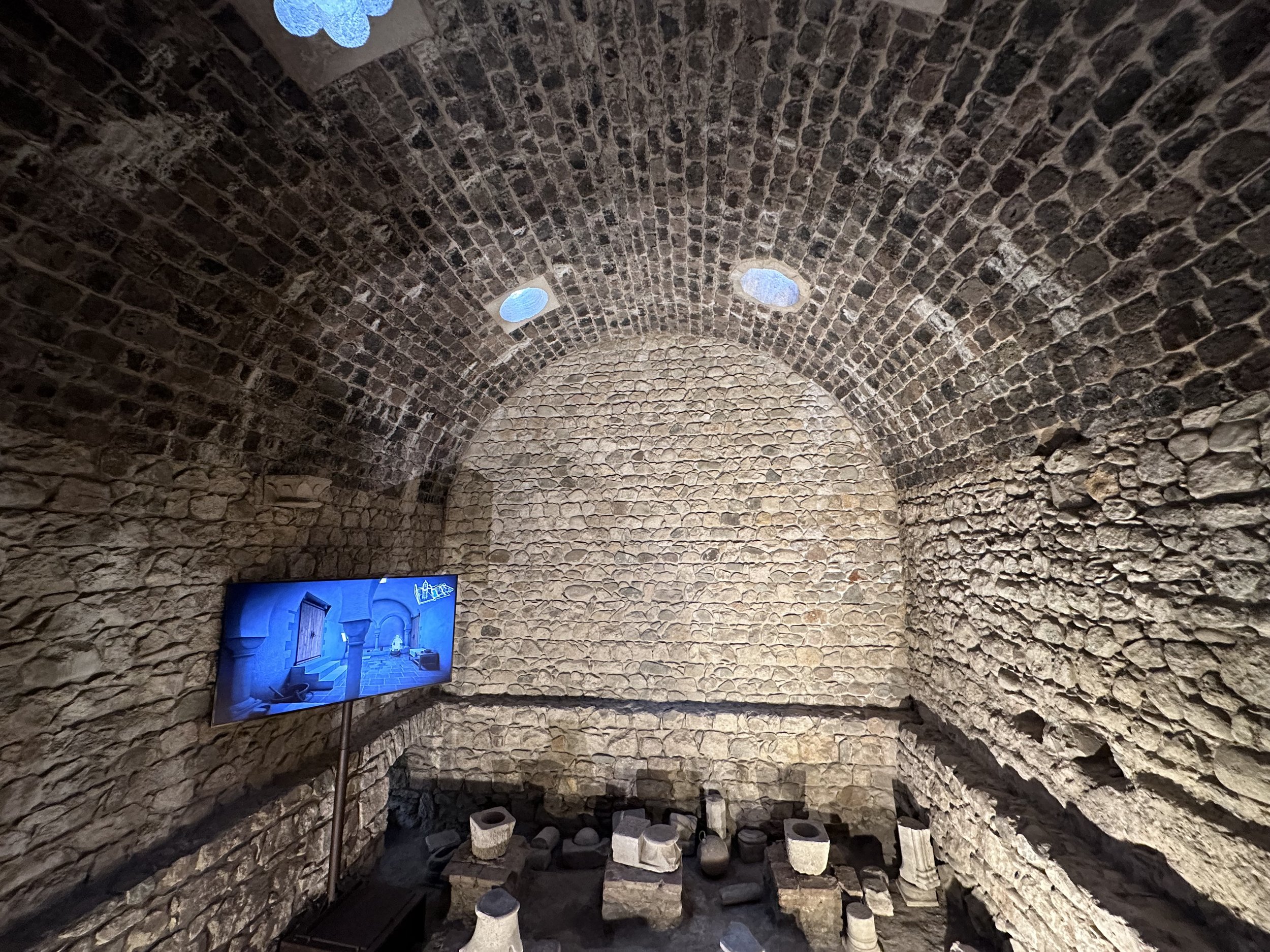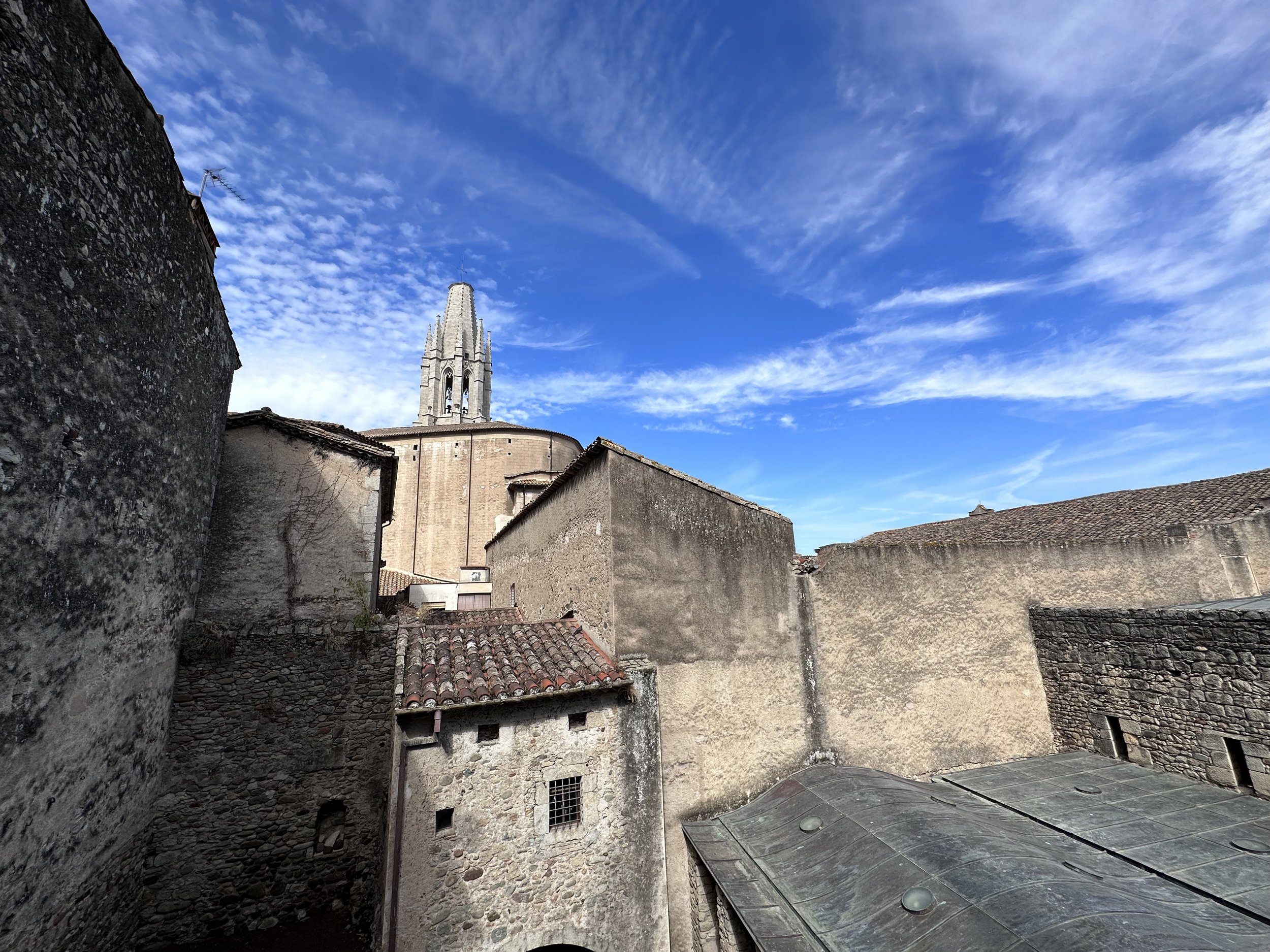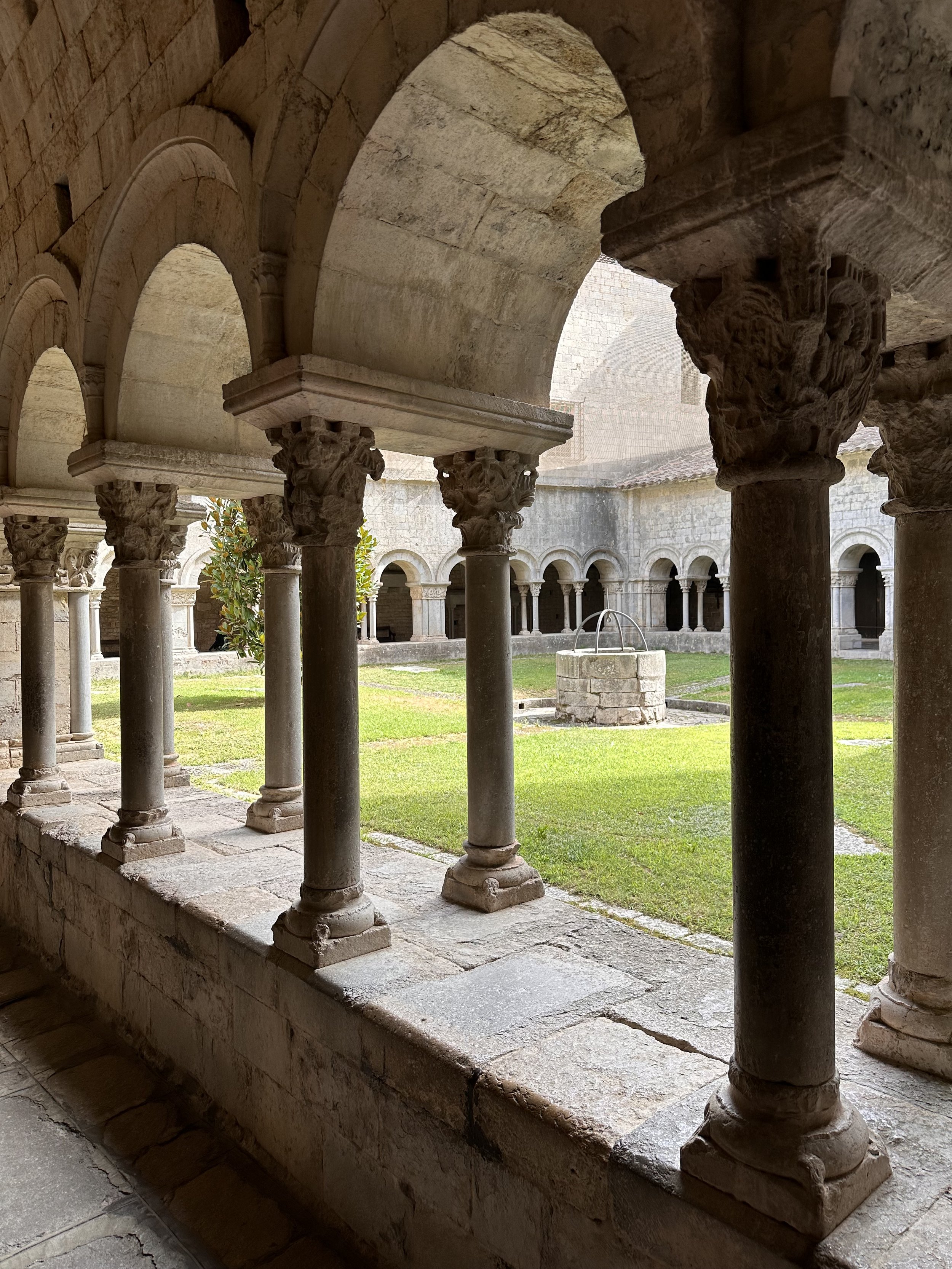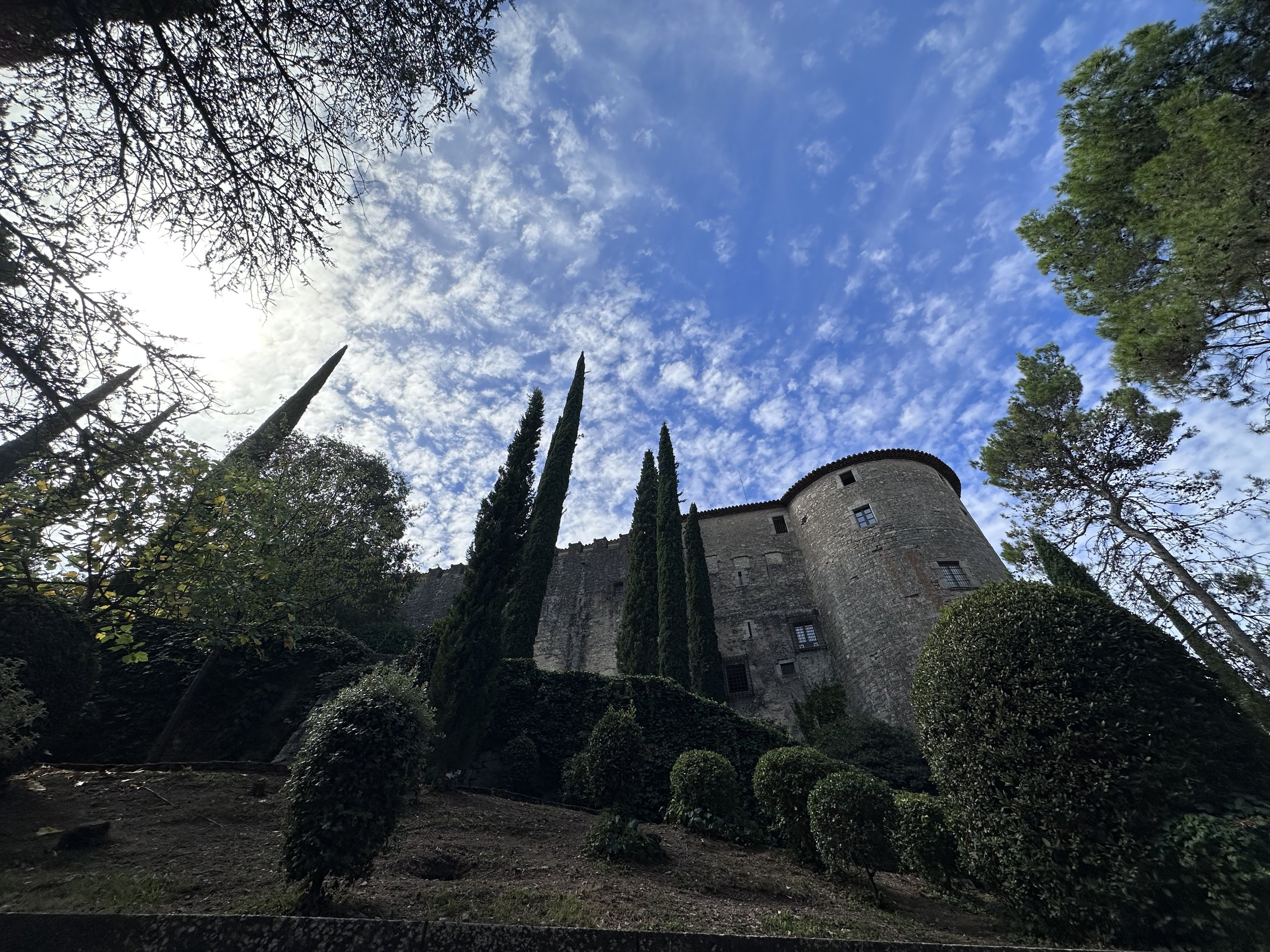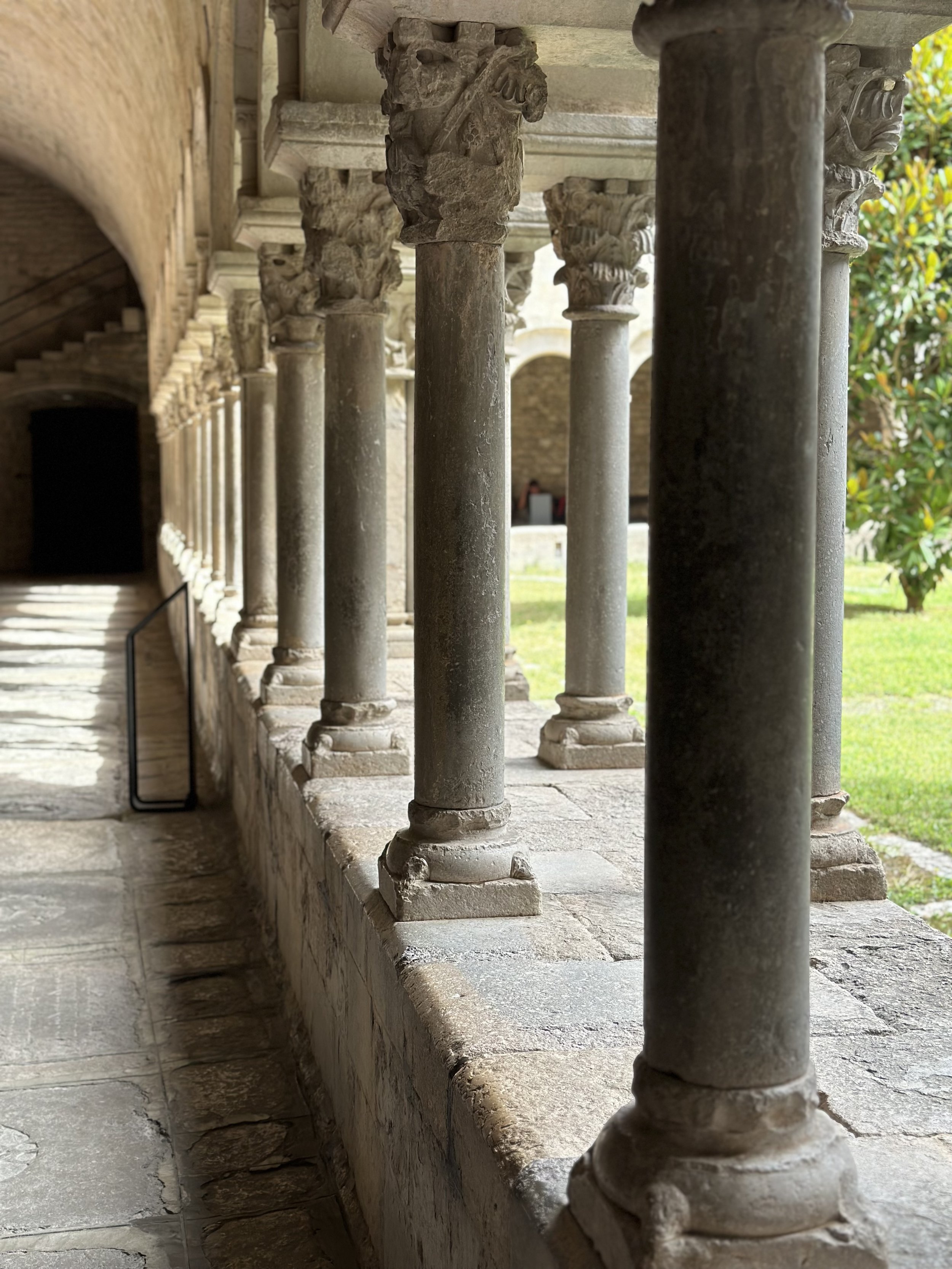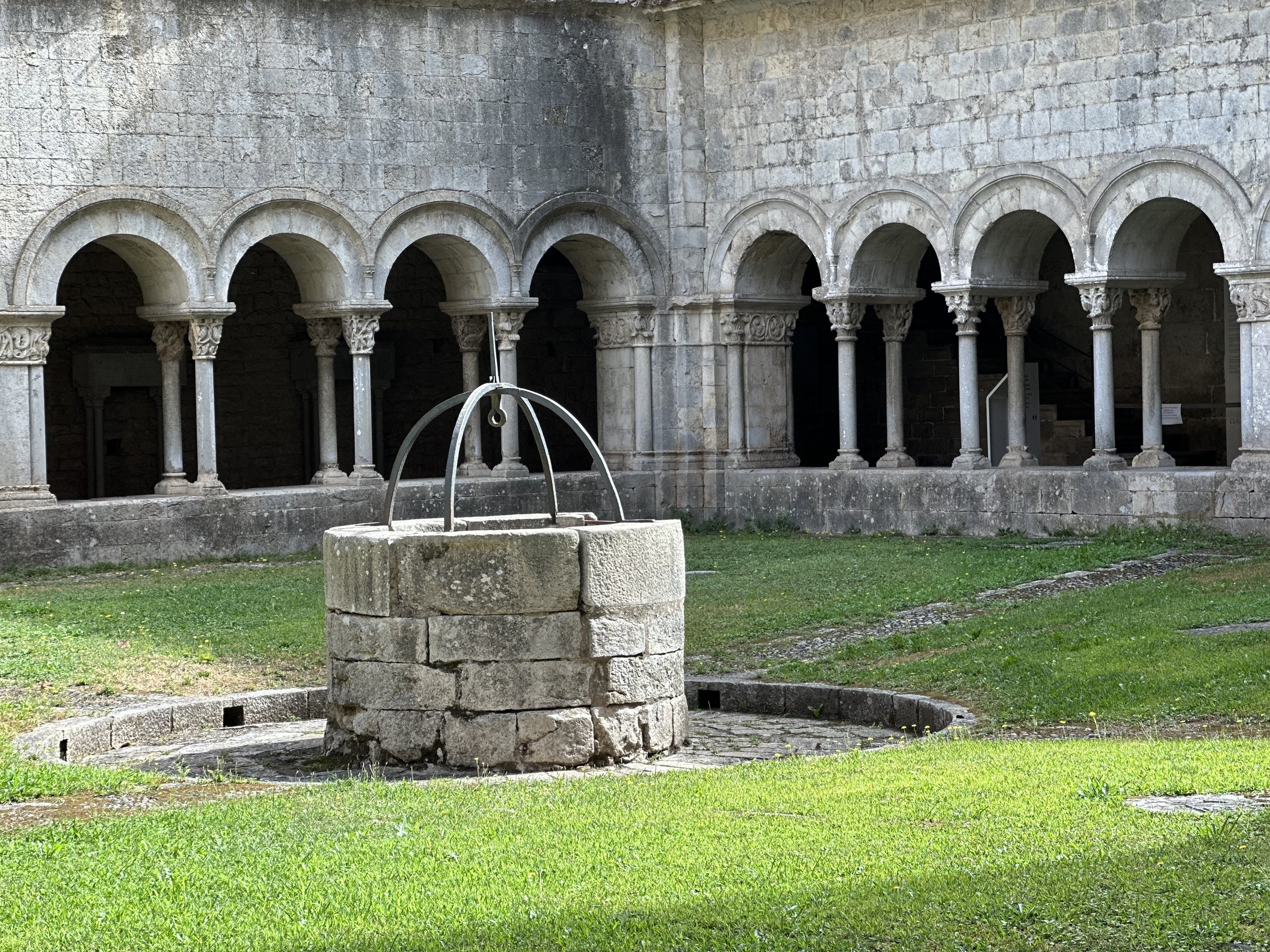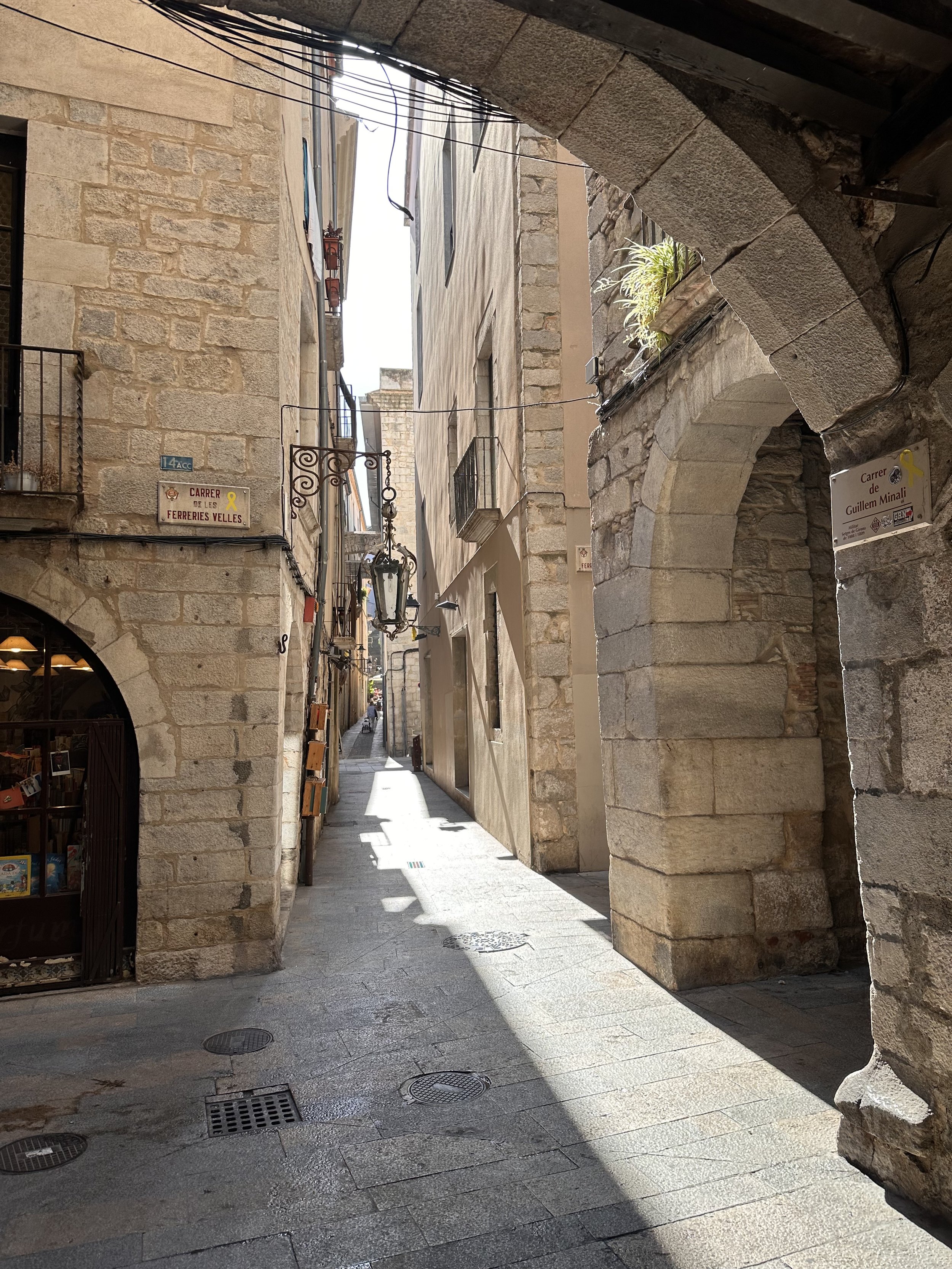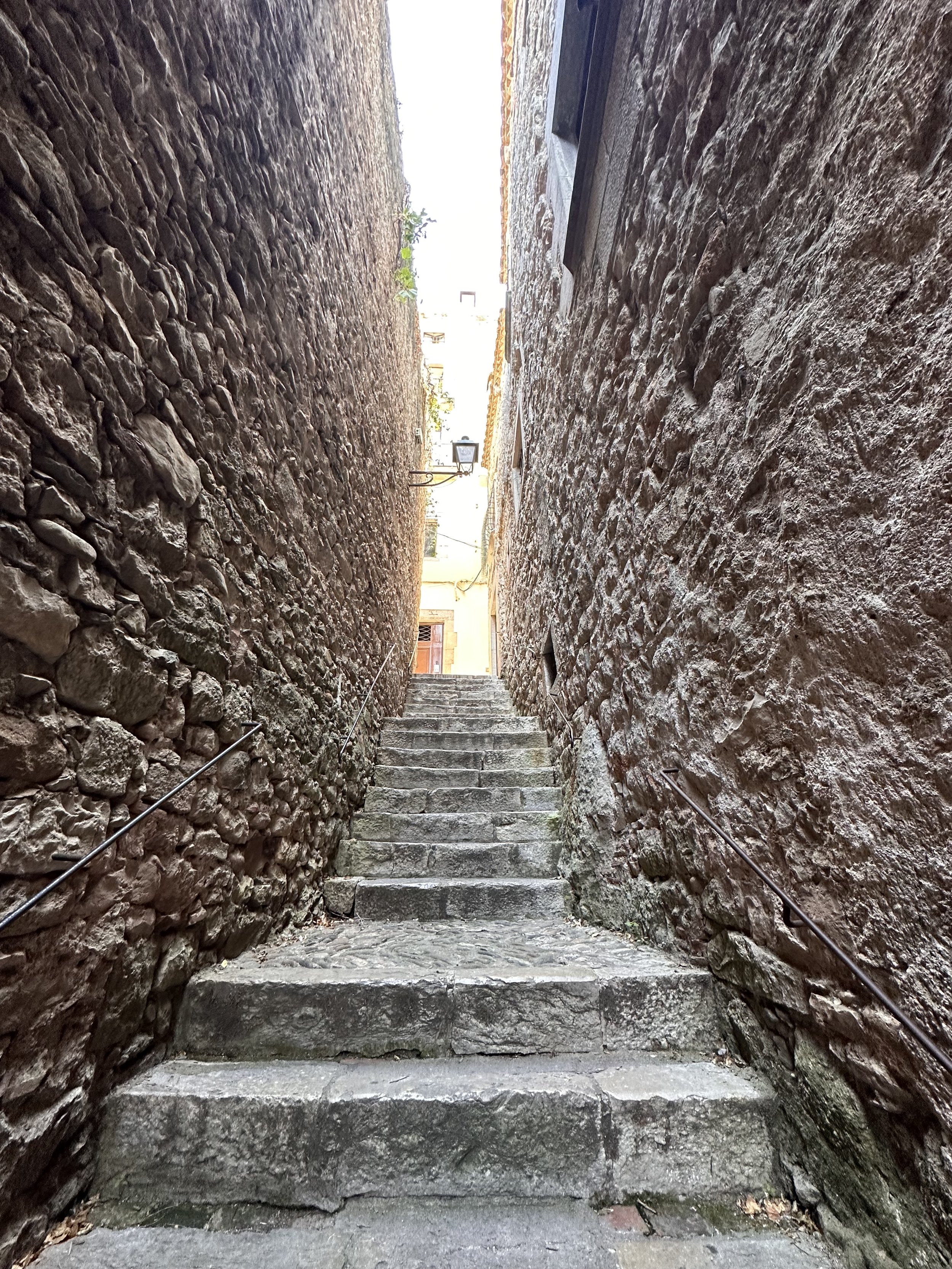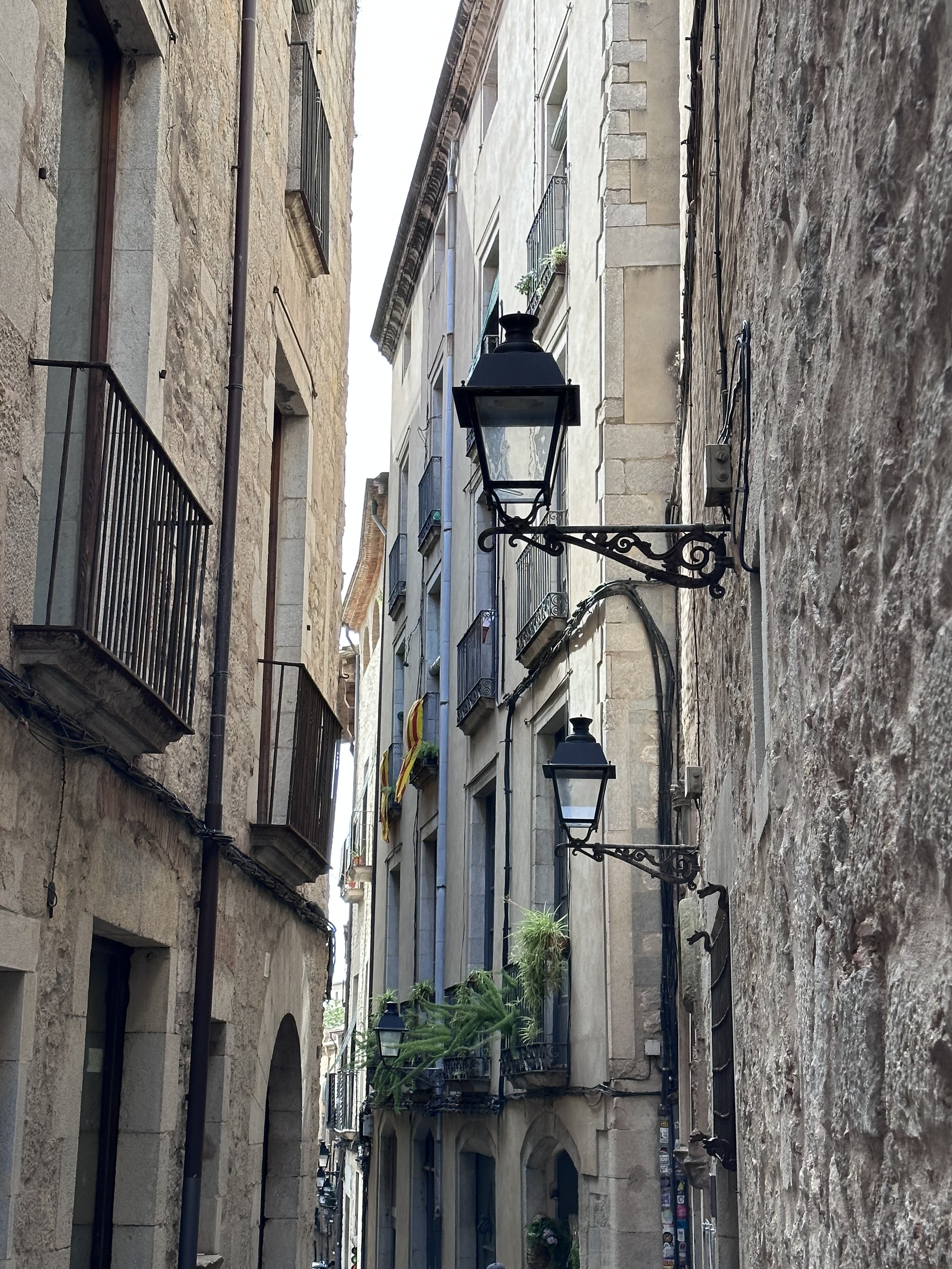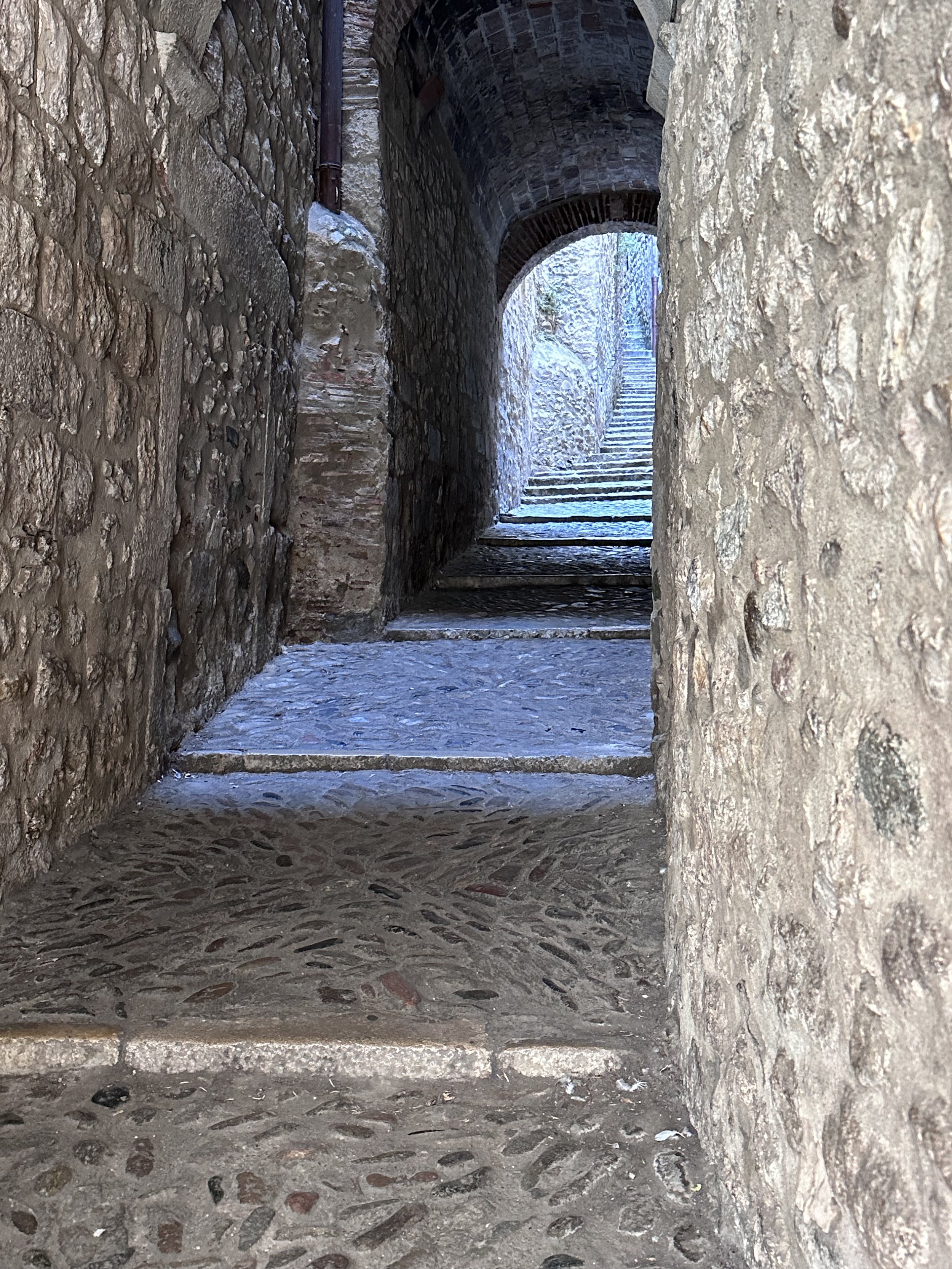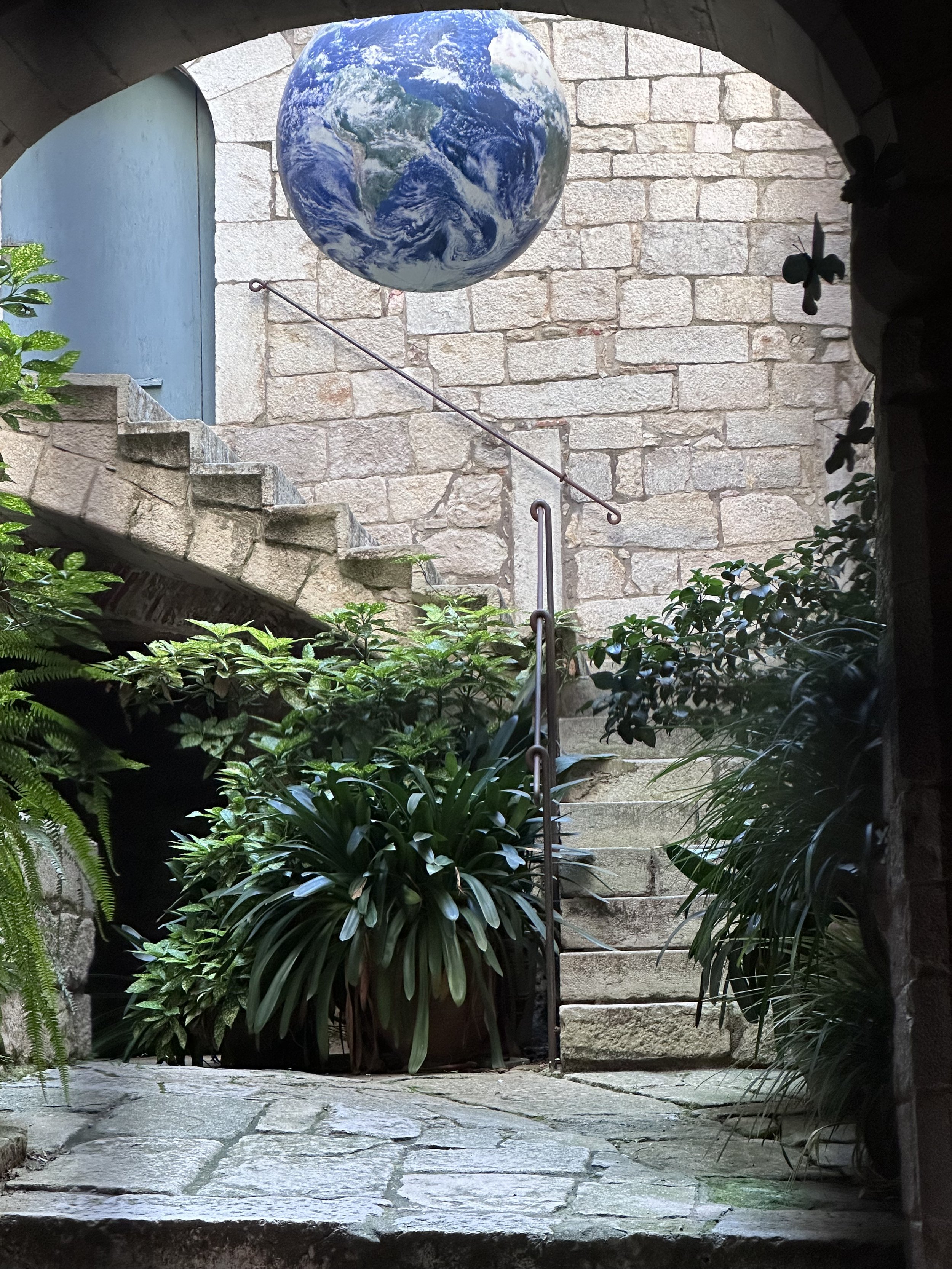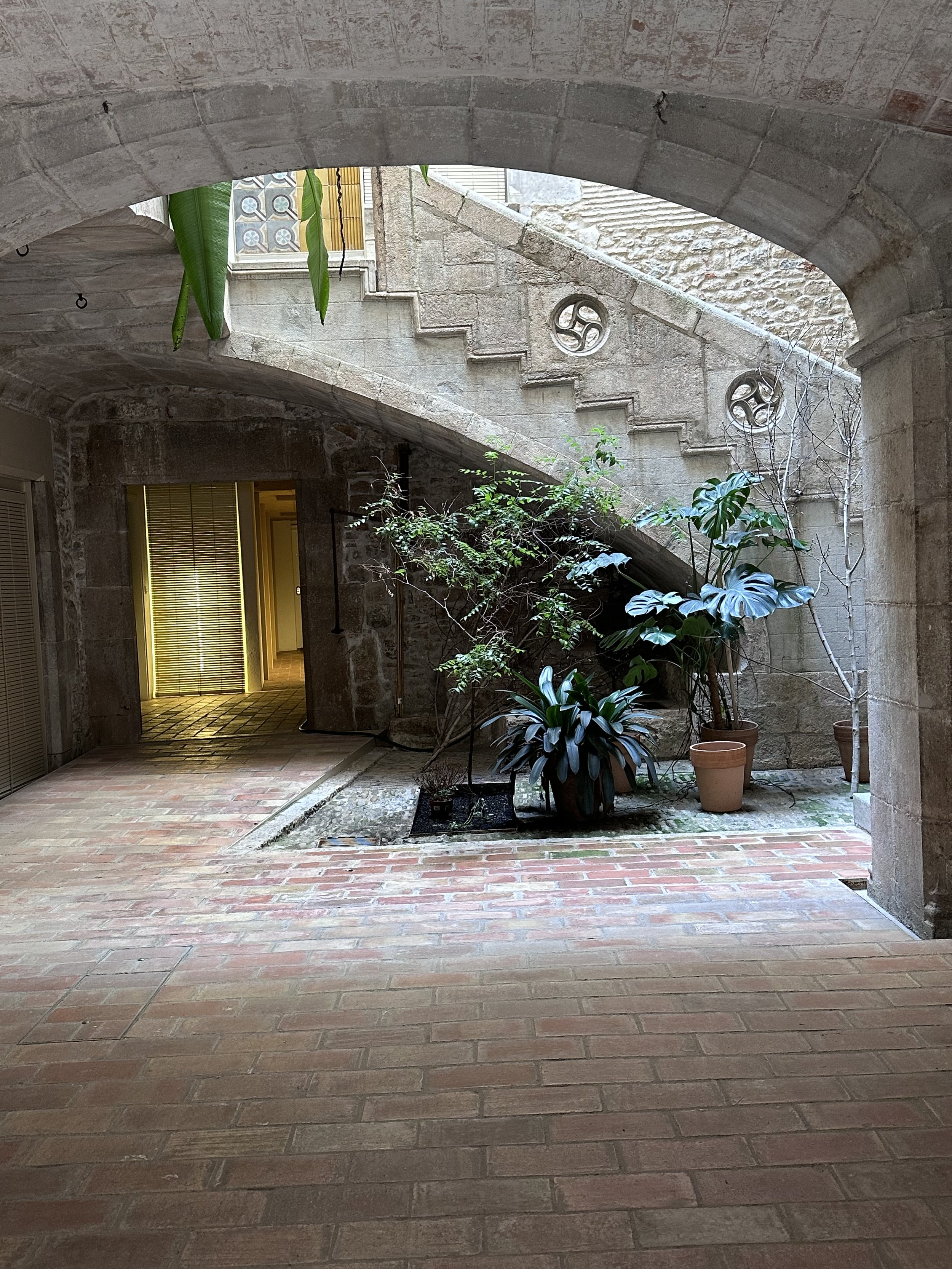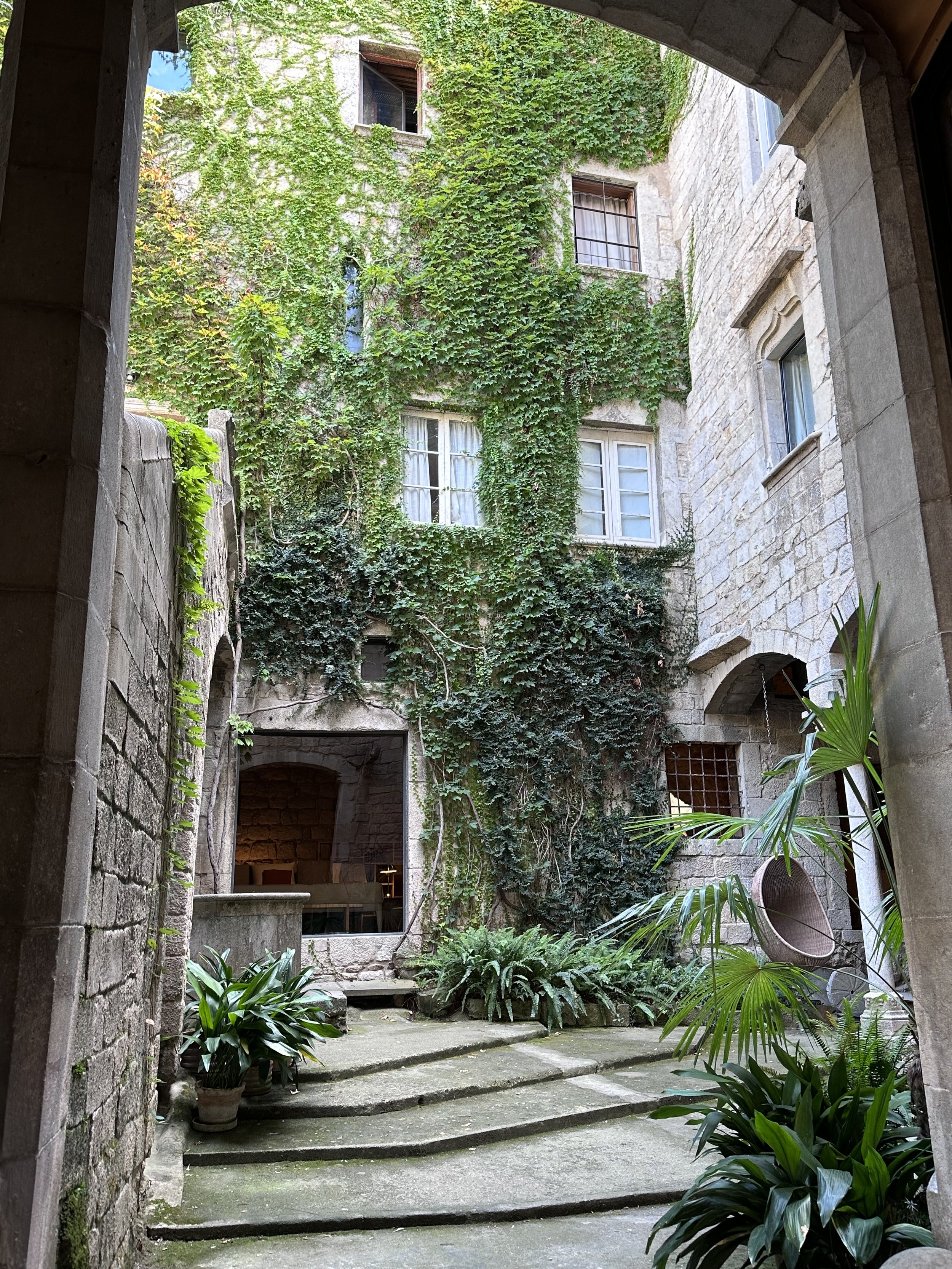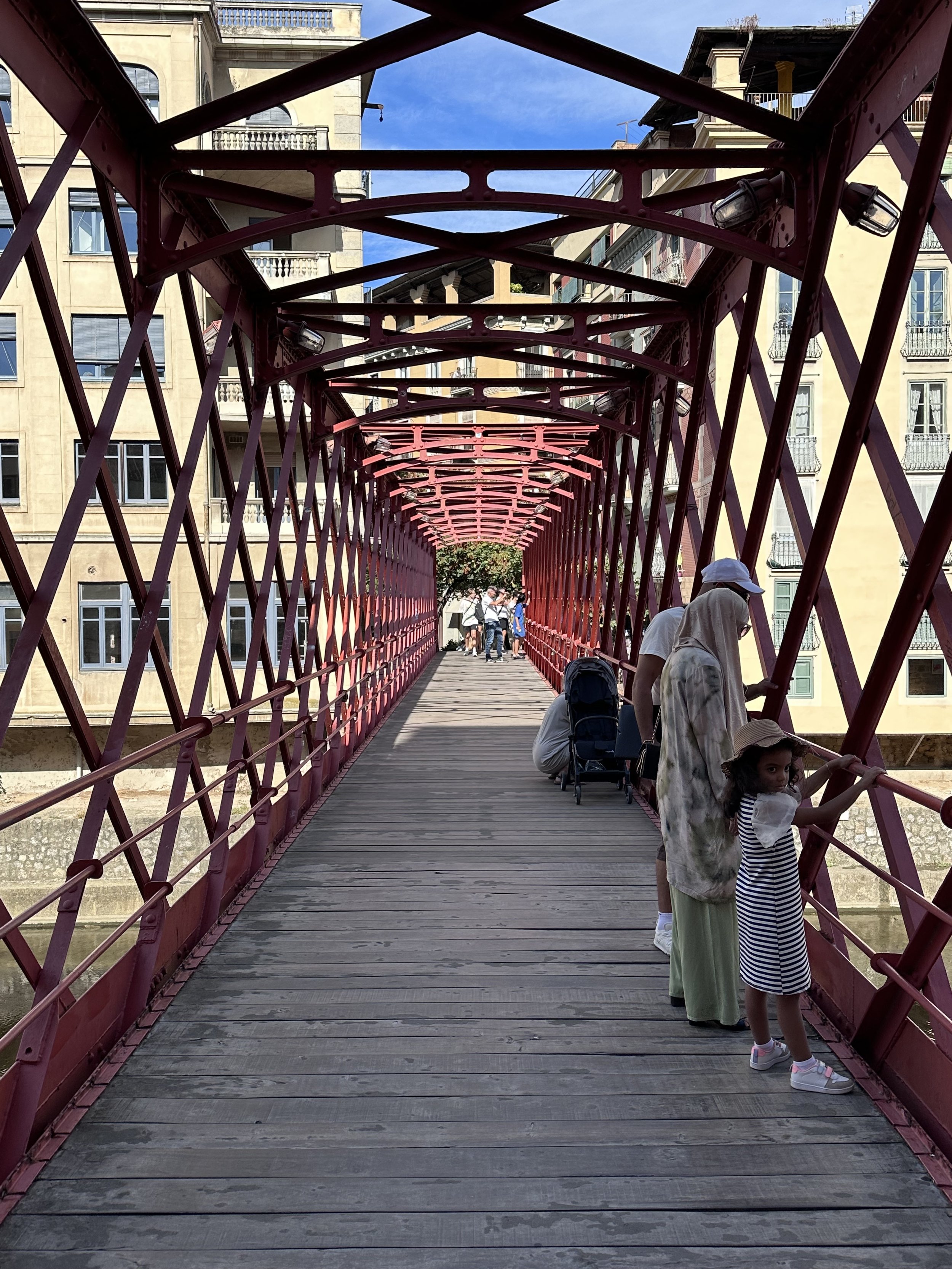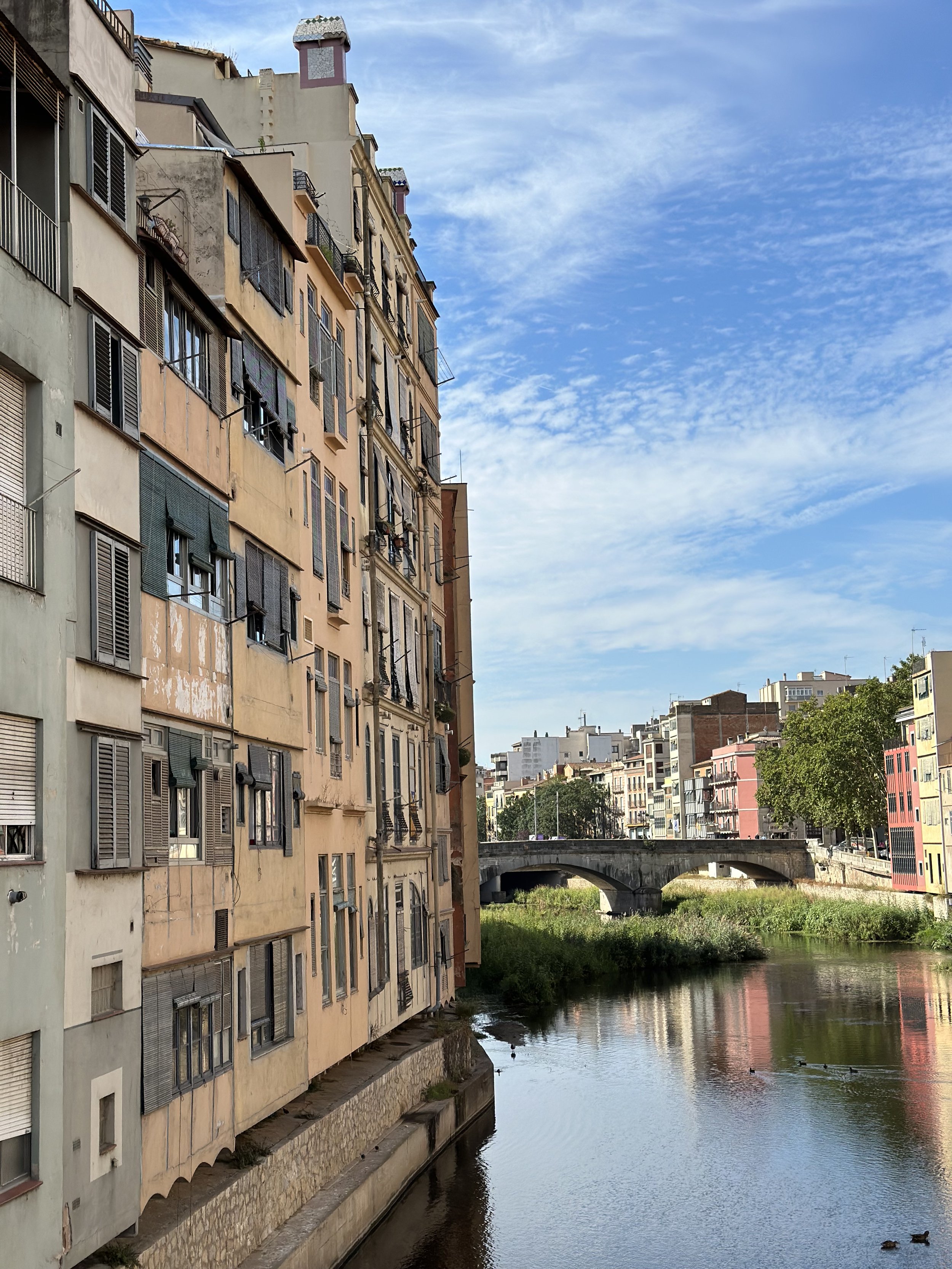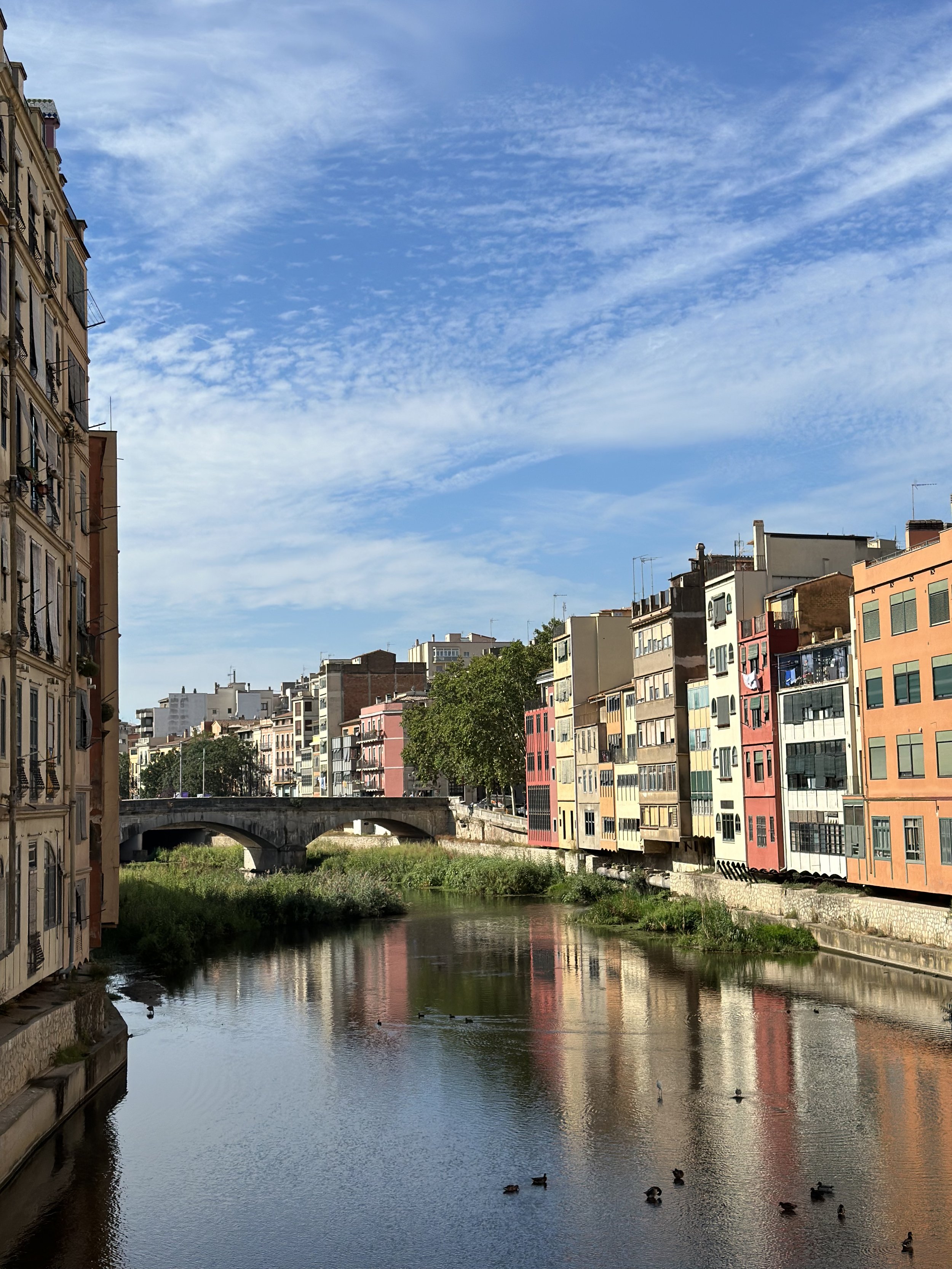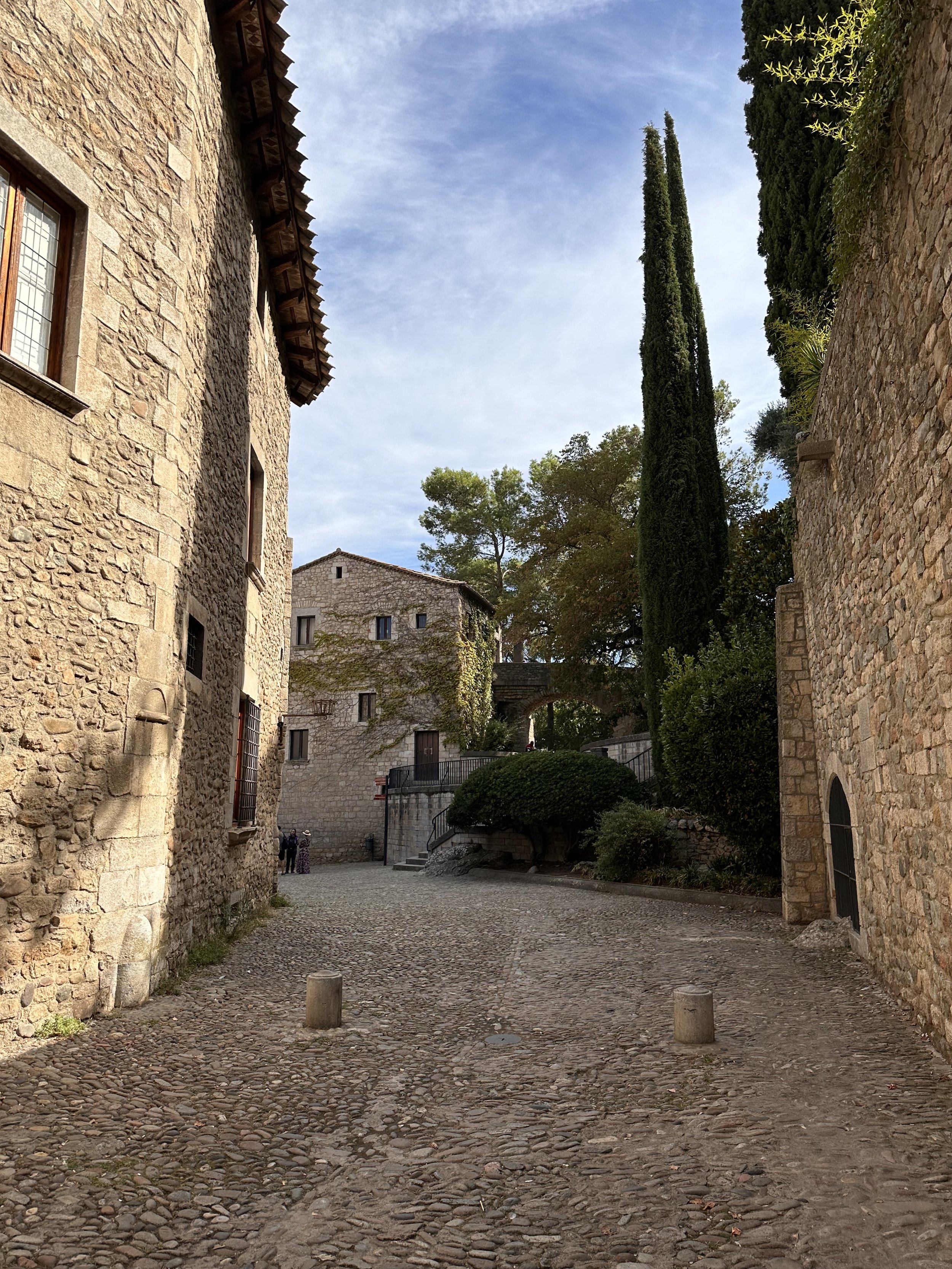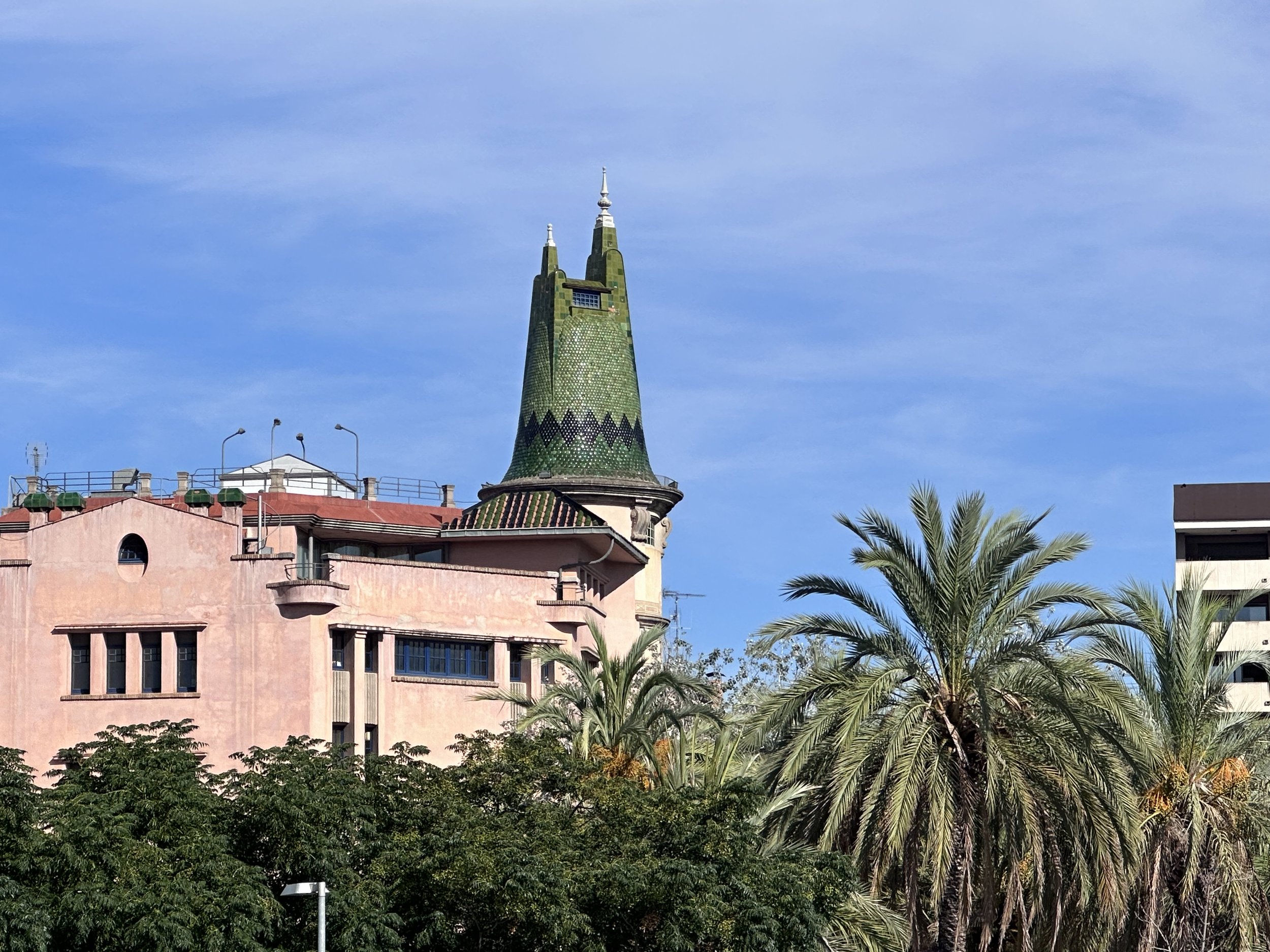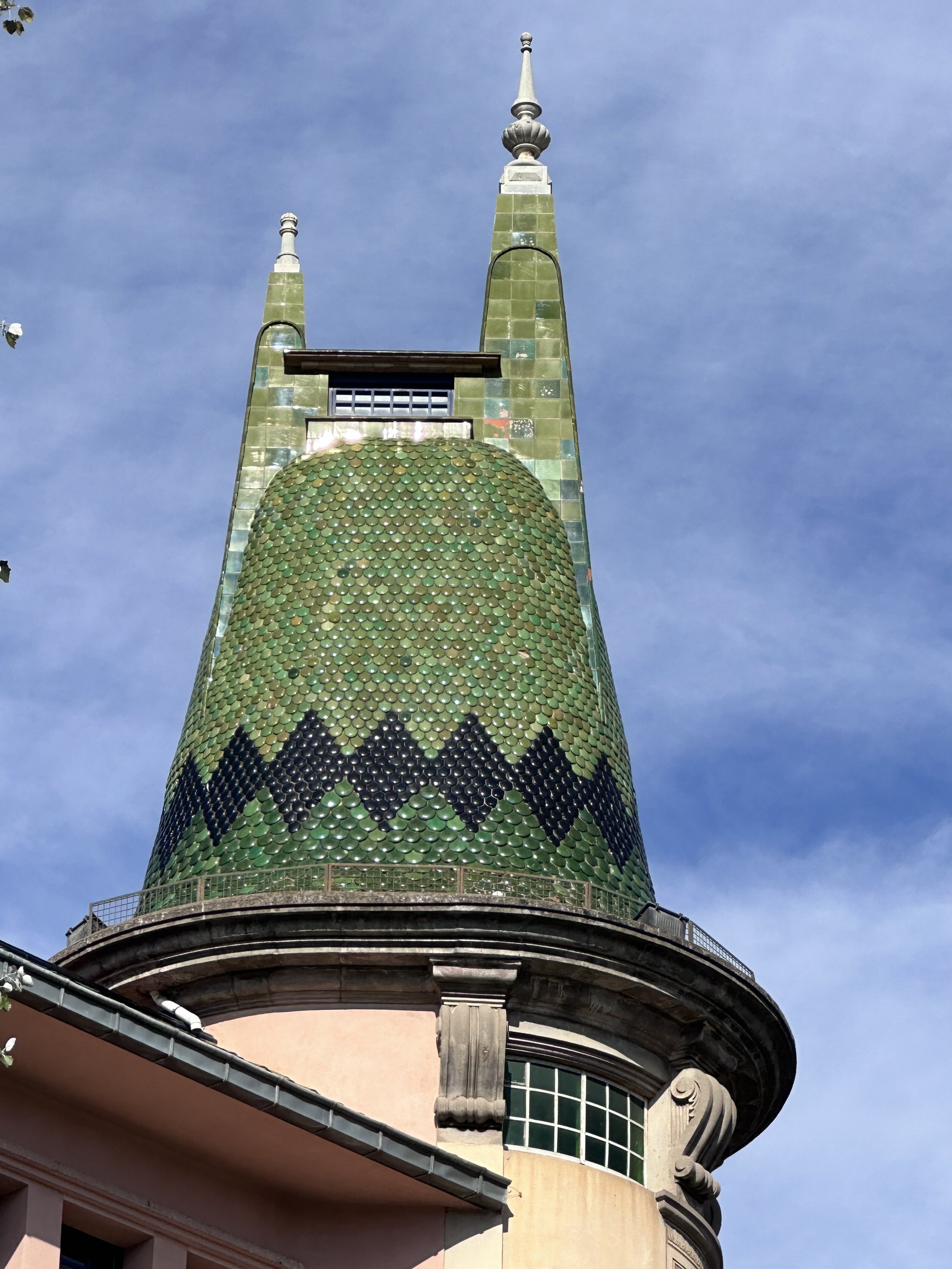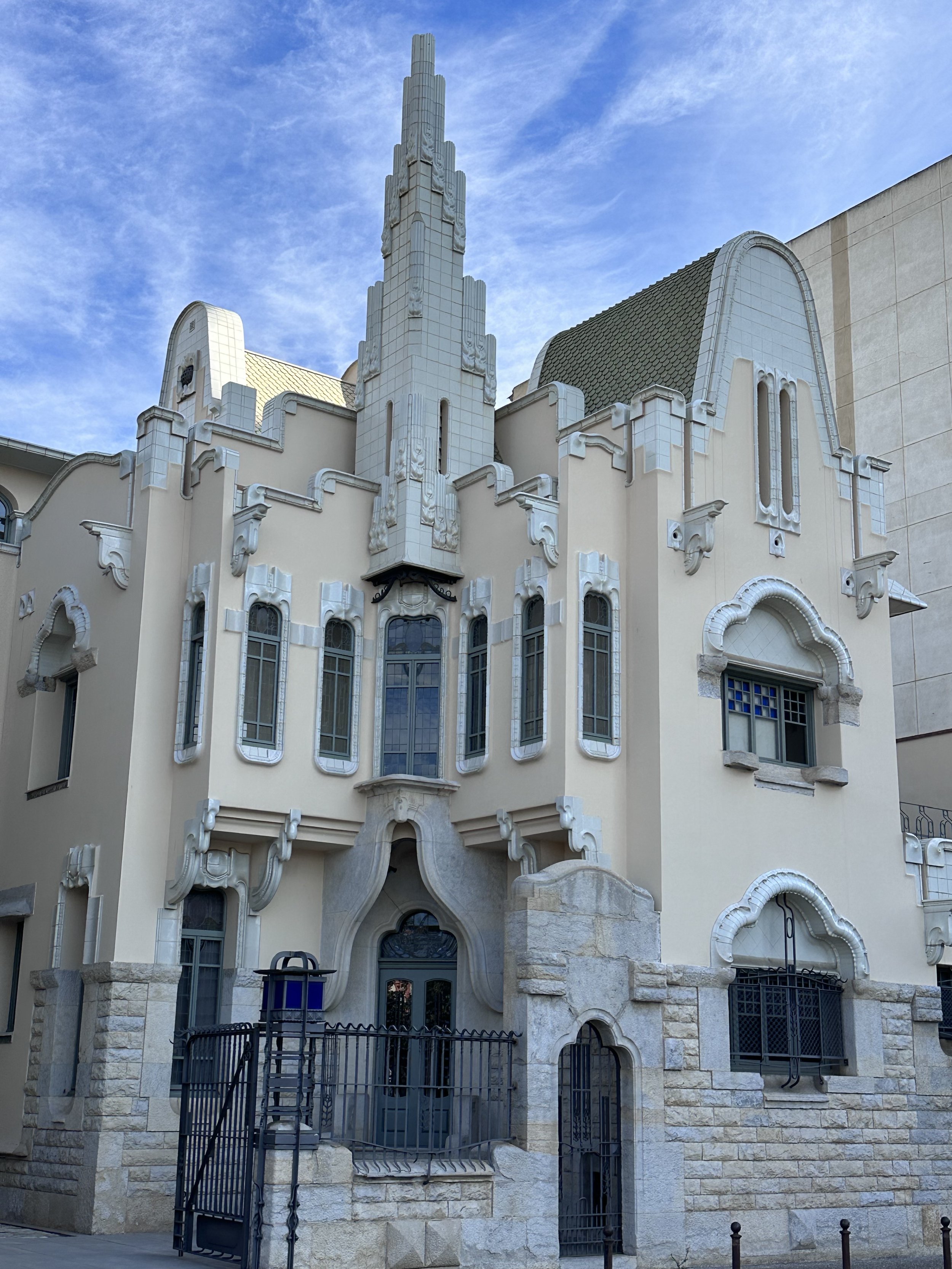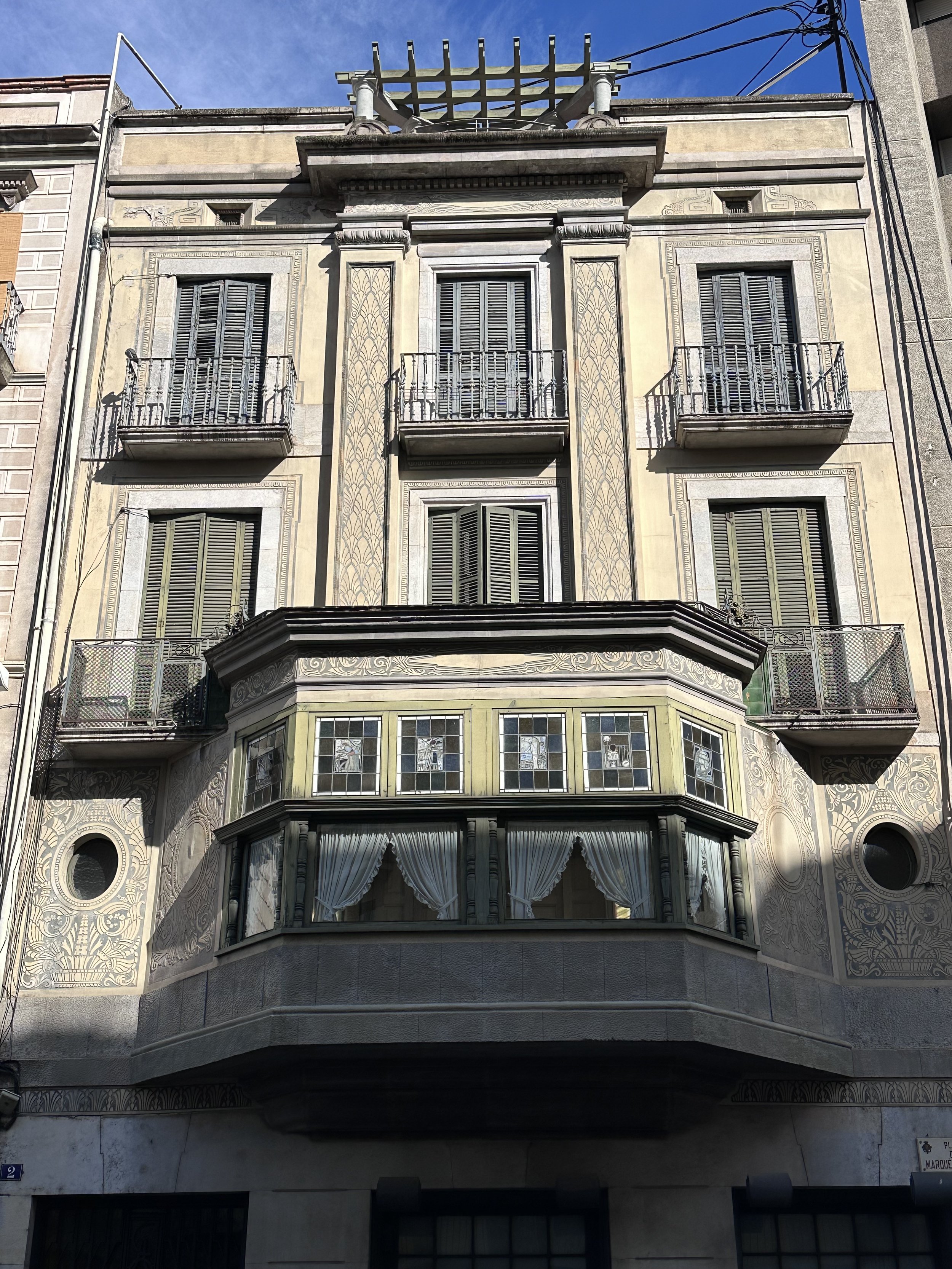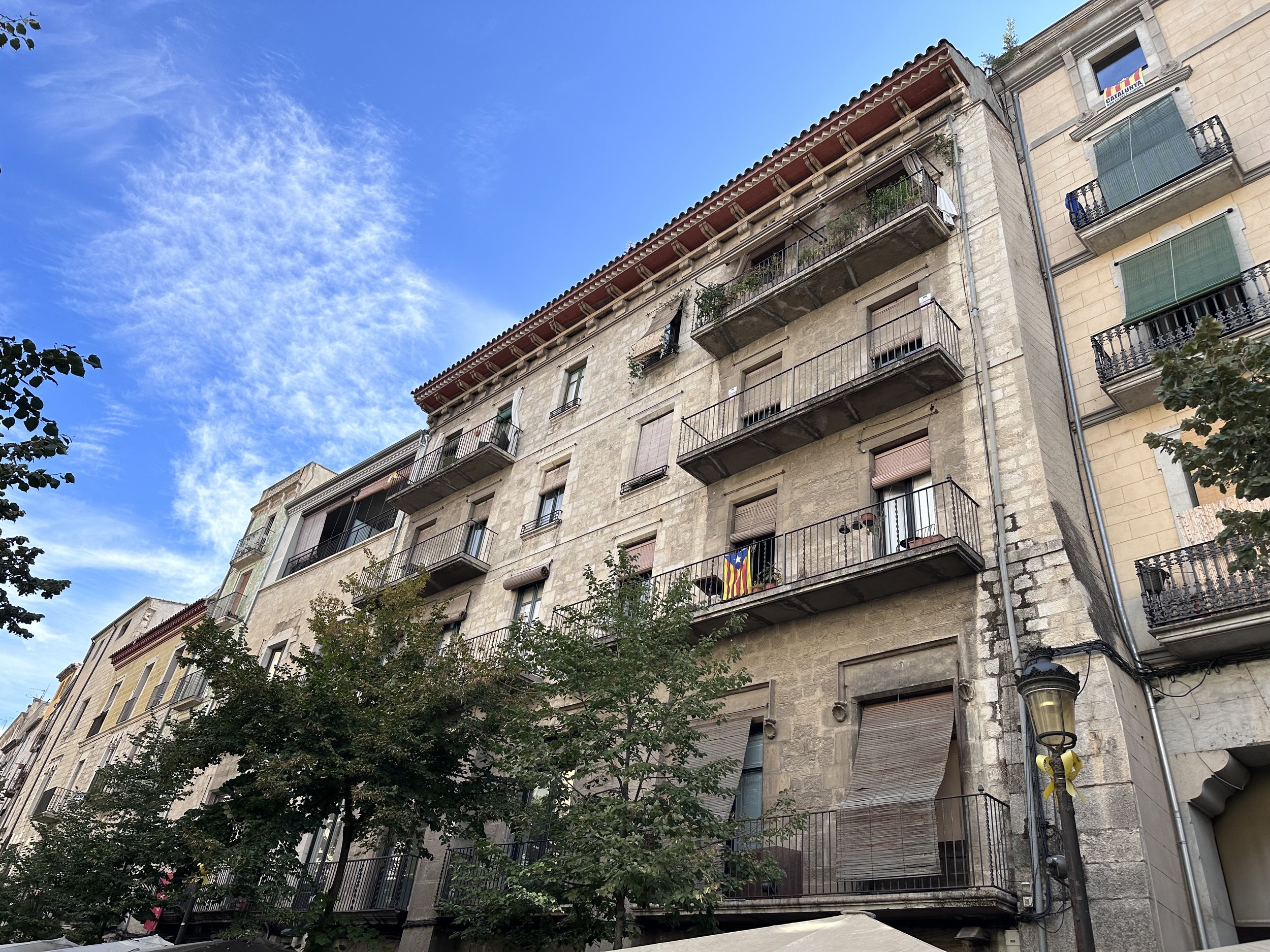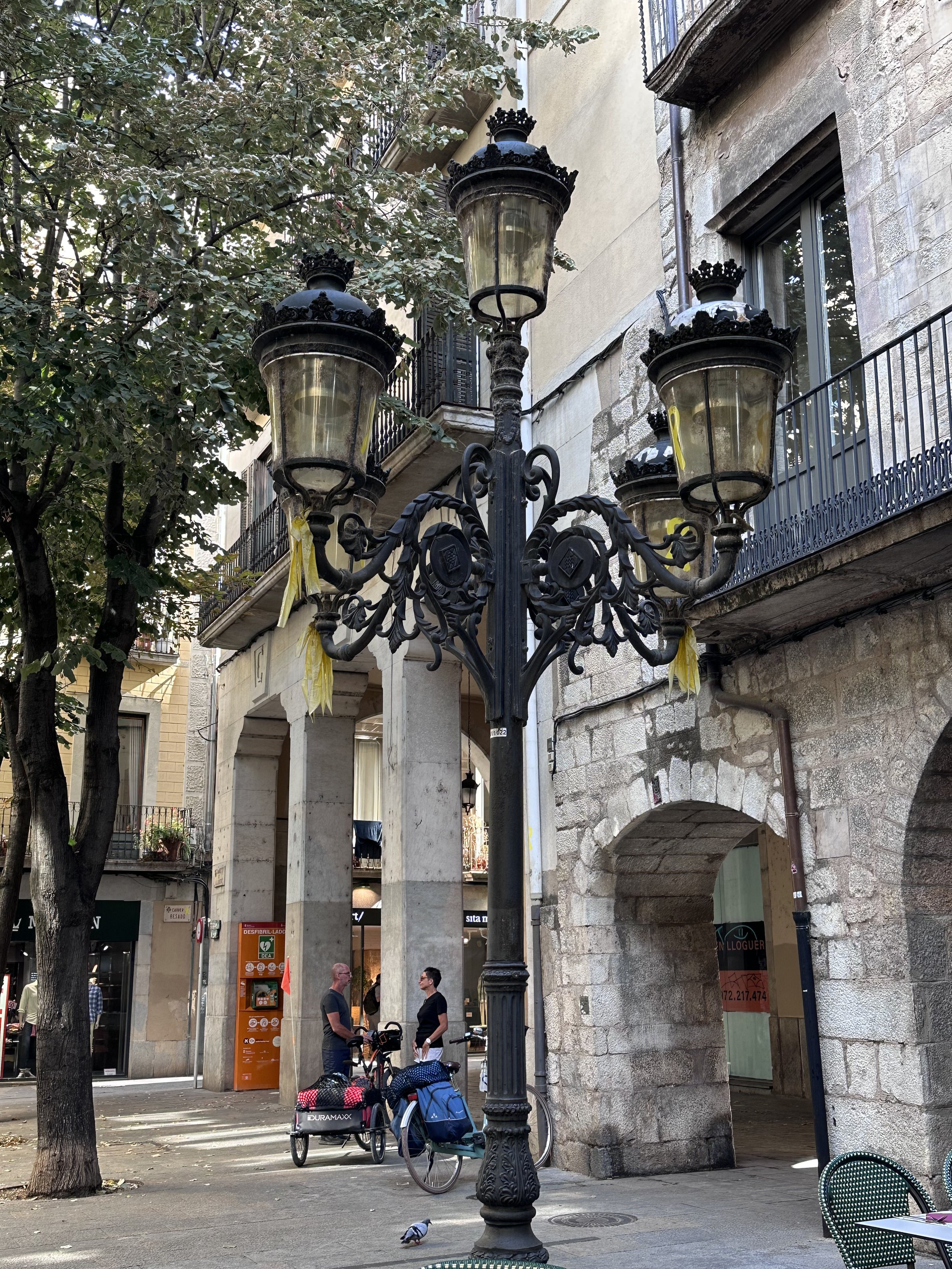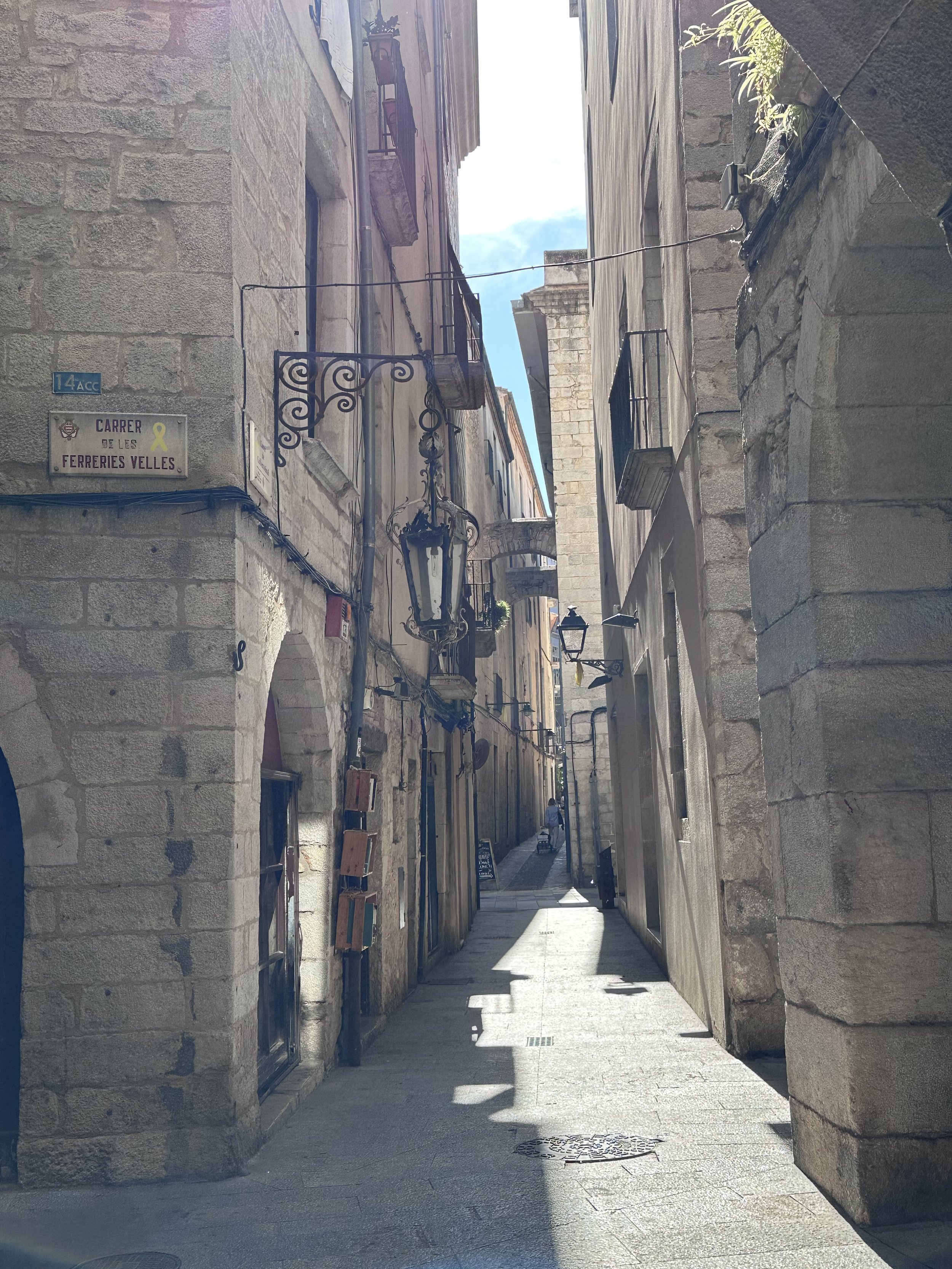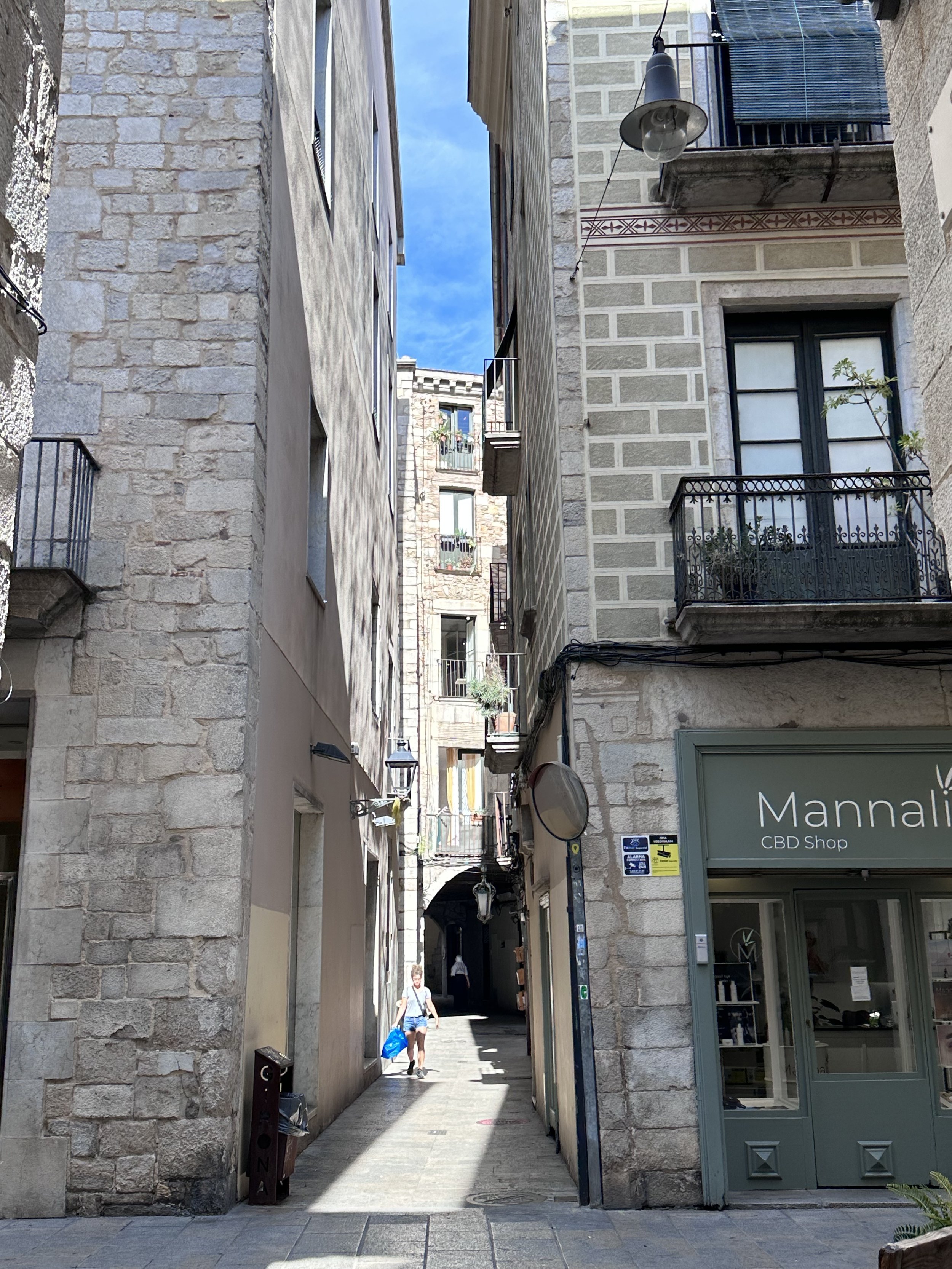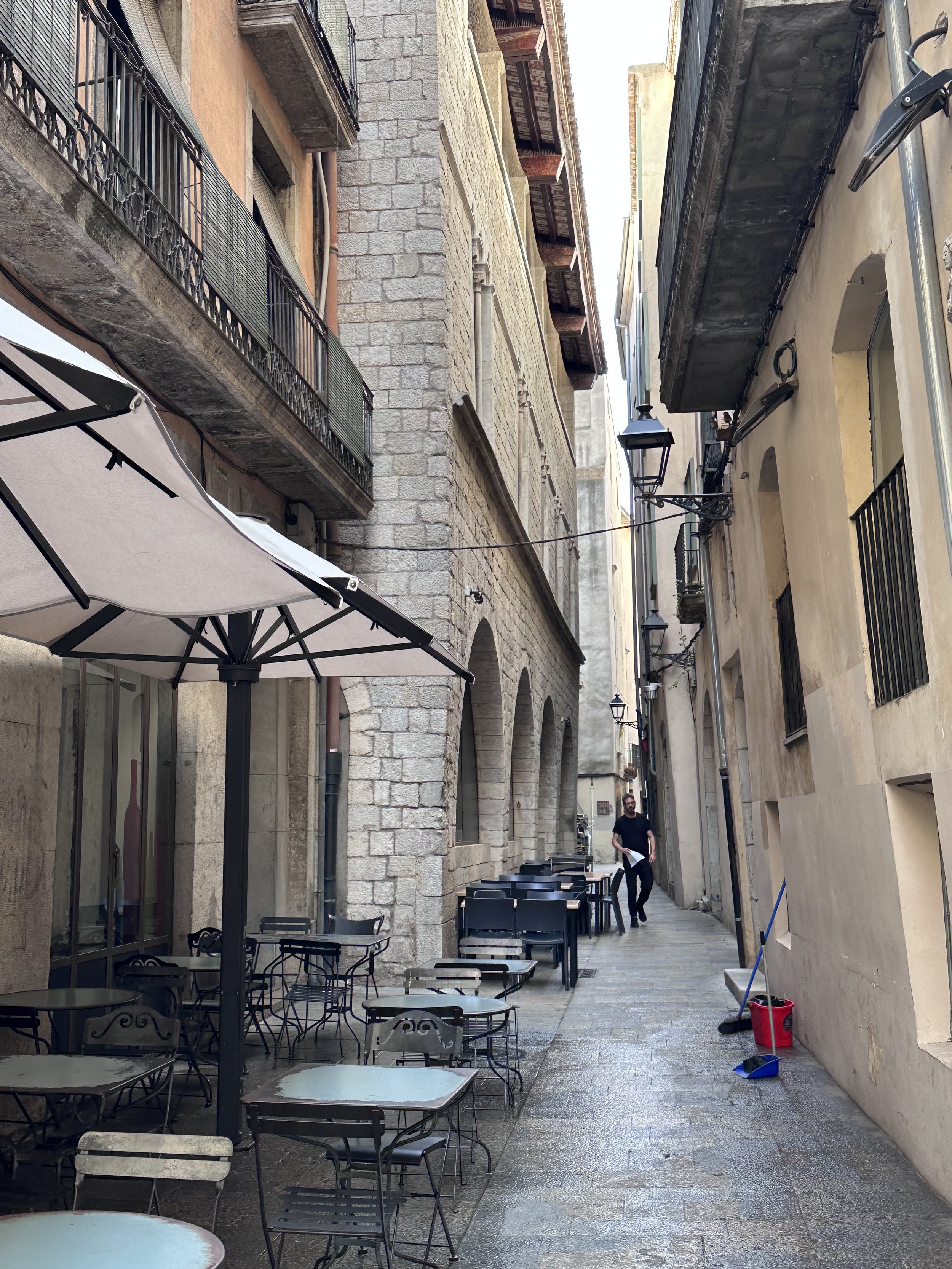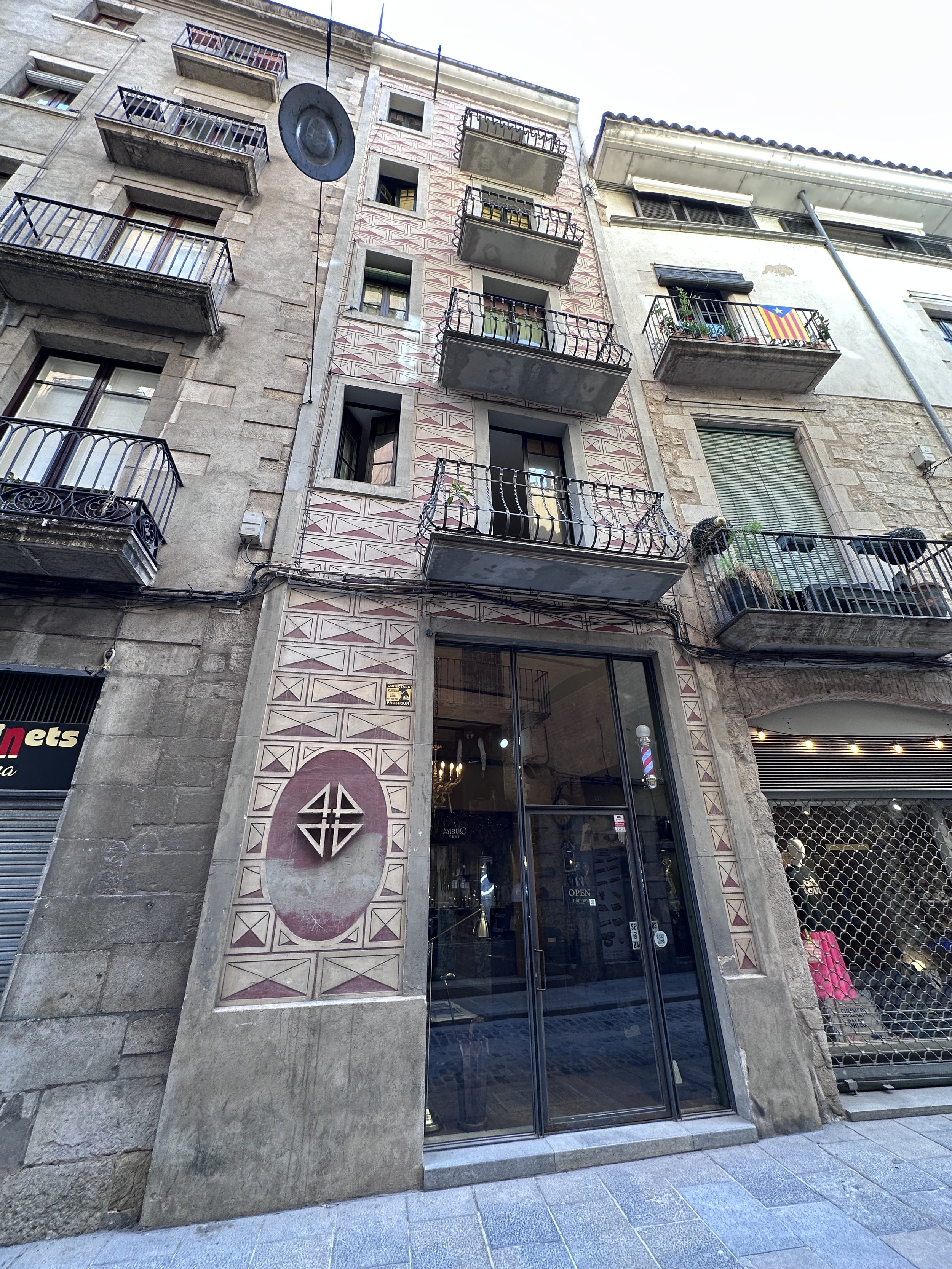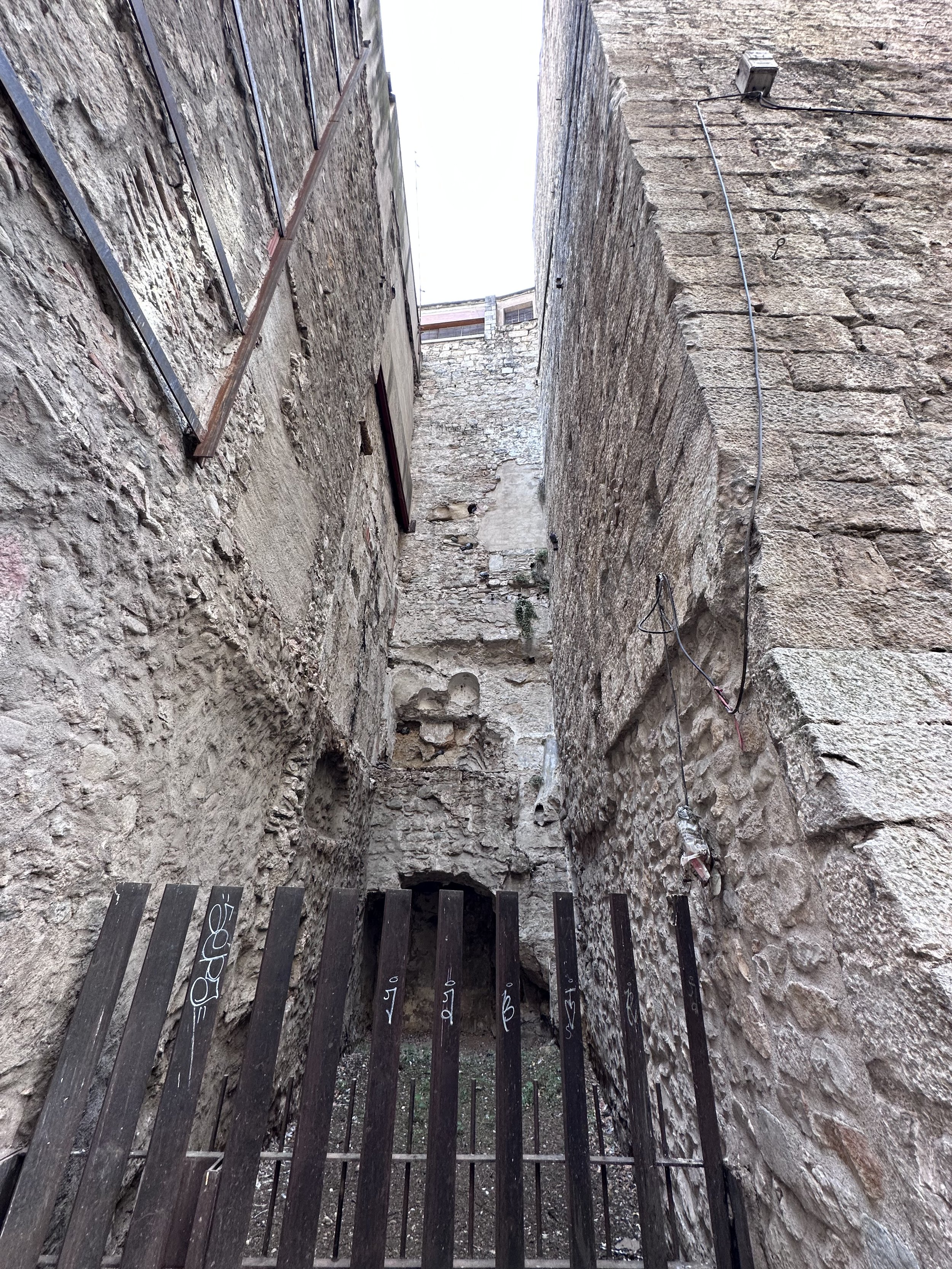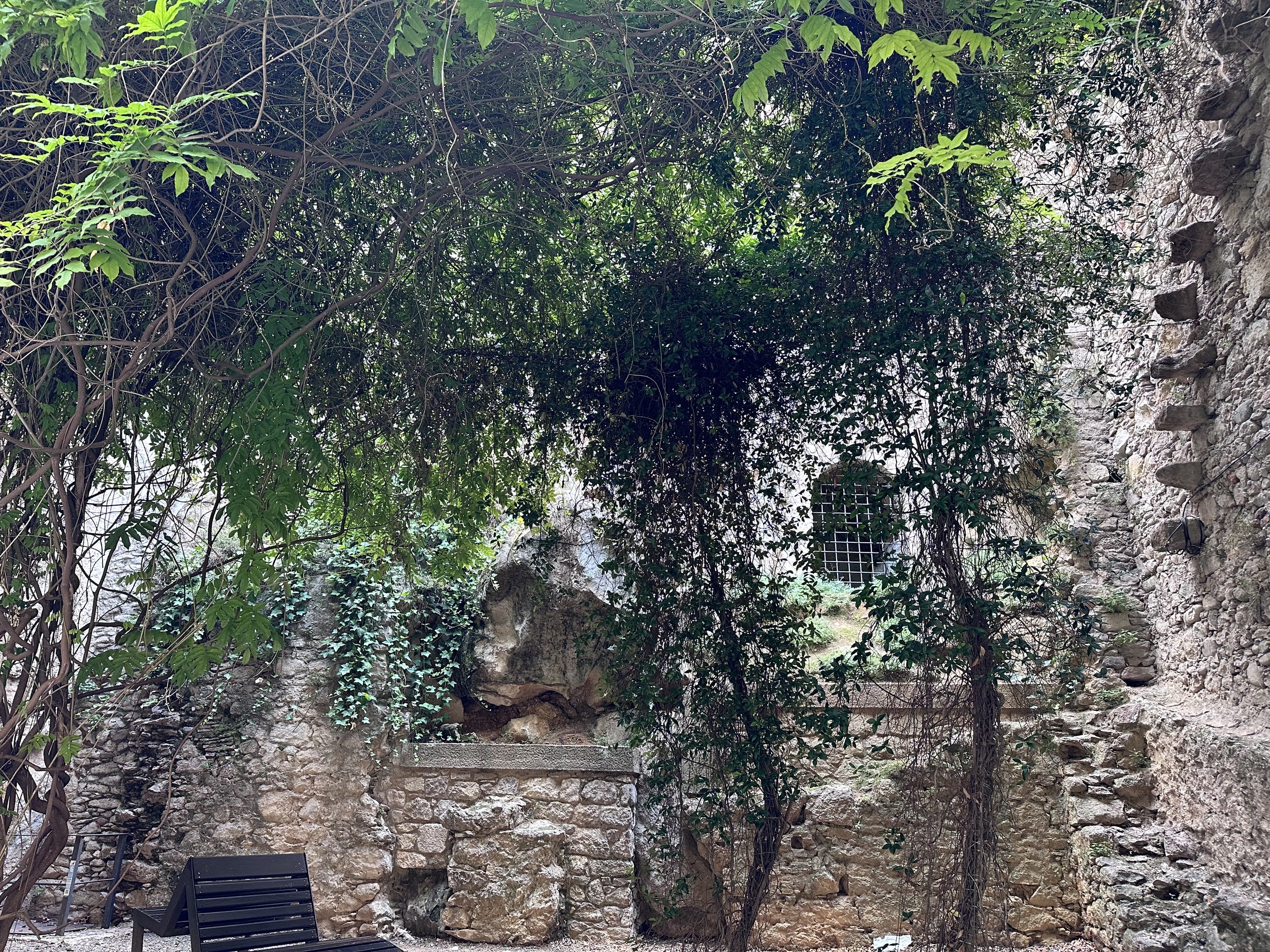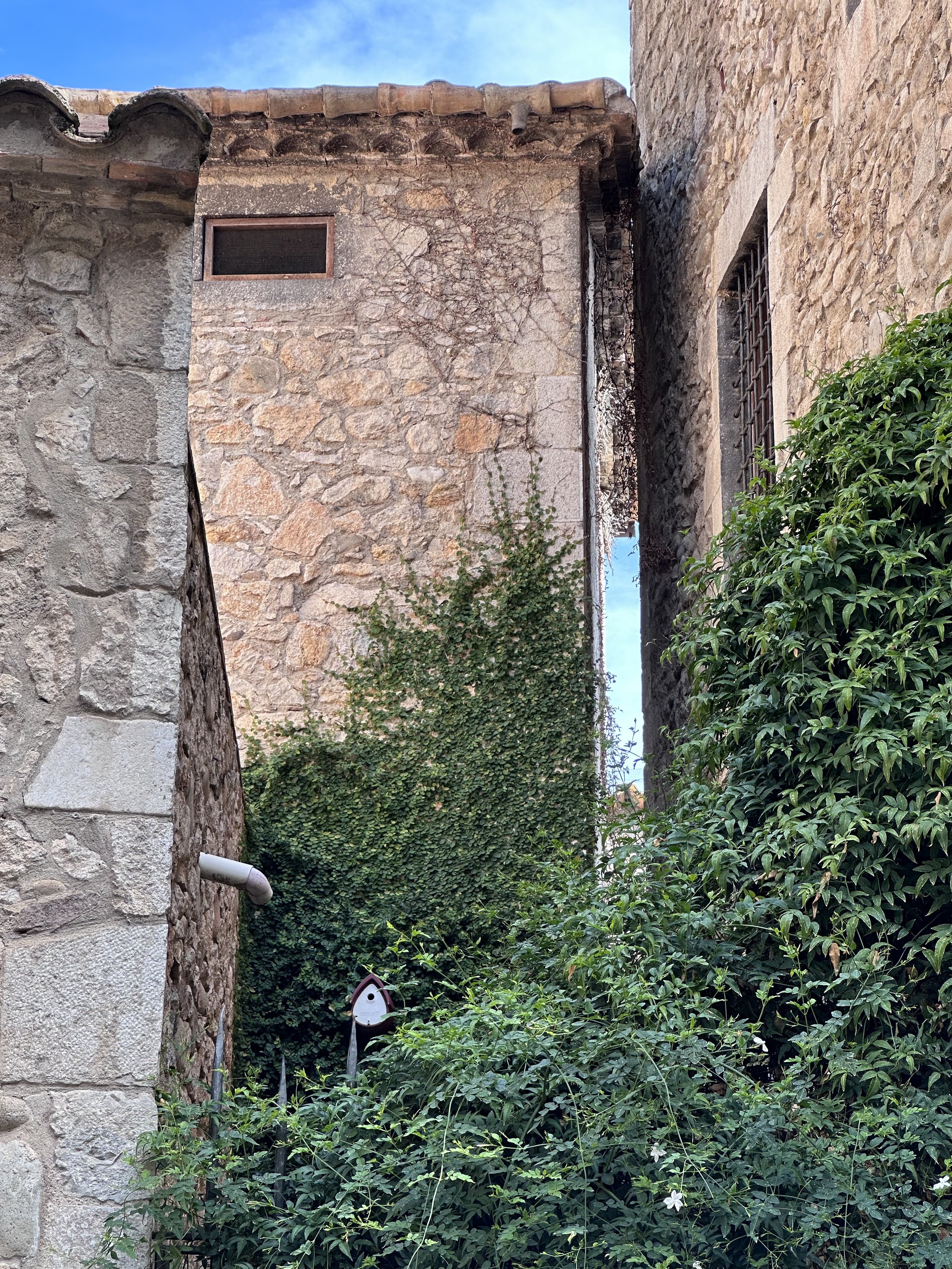Exploring Girona, Spain
Time needed in this town: 1-2 nights
Blackbeard and I took a day trip from Barcelona to Girona because 1. It’s one of the most beautiful historic towns in Spain and 2. because it was a “hot spot” for Game of Thrones filming. But, once we got there, it was so much more than both. There’s definitely a peaceful, beautiful vibe to the town that makes you want to explore every single alleyway and corner.
The below information is a complete guide of the best places to stay, the top rated places to dine and drink, and all there is to see and do. We’ve also included transportation tips, as well as a summary of the history of this medieval town!
Jump To:
Where to Stay
While there are some beautiful, small places to stay, you do not need more than a day trip to see it all. If you choose to stay overnight, below are some great options:
Where to Dine & Drink
Bo.TiC
Contemporary, artfully plated takes on Catalan cuisine in a minimalist space with stone walls.
Bye Bye Blat
A dedicated gluten-free bakery and store
Can Boix
The Boix brothers demonstrate their strong preference for traditional fish and meat stews, meat grilled over a natural wood fire and – one of the real highlights – truly exquisite rice dishes (for two), one of which is vegan.
Can Xapes
Starting out as a cinema in 1949, it now operates as a restaurant school, and also features attractive dining rooms where guests can savour Catalan cuisine with a contemporary feel on three menus (Migdia “La Barra”, Degustació and De Cine) based, where possible, on locally sourced ingredients.
Cipresaia
Simple yet delicious traditional cuisine with the addition of a few contemporary touches from around the world
Crêperie Bretonne
A Breton pancake house in the heart of the old town
Divinum
Renowned locale for artfully presented seasonal dishes, served in a brick-ceilinged dining room.
El Celler de Can Roca
A three Michelin-starred restaurant, as well as one green star, three brothers run this chic bistro known for inventive variations on traditional Catalan recipes.
La Fabrica Girona
Mellow brunch, coffee & cocktail stop serving vegan snacks, with bikes on the walls & outdoor seats.
L'Aliança d'Anglès
A Michelin-starred eatery that is a part of local history as it occupies a building dating back to 1919 that once belonged to a group of farmers and acted as a casino and a type of social club. In the hands of the Feliu family since the 1950s, they serve two tasting menus with contemporary flare.
L’Alqueria
Stylish eatery with bare stone walls for paellas & other rice dishes, plus Valencian meat & fish.
L’Assaig 1901
Traditional Catalan cuisine.
L' Atelier Dagà Clos
A contemporary, family run restaurant offering honest and well-prepared traditional cuisine, featuring impressive portions and unpretentious time-honoured flavors.
La Vedette
Buckwheat-flour crêpes & cheese fondues served amid stone walls & brick vaults or on a terrace.
L’exquisit Girona
A great cafe overlooking the Onyar River. They offer gluten-free bread for their sandwiches
Mas Marroch
This old farmhouse in a quiet, verdant setting features a unique dining space crowned by a huge glass dome where guests embark on a culinary journey exploring the Roca brothers’ most iconic dishes!
Massana
A Michelin-starred restaurant, specializing in lunches of 15 courses, paired with regional wines at an elegant Gironese fine dining institution.
Mimolet
Artfully presented contemporary dishes, with global twists, in a bright, wood-filled space.
Nexe
Minimalist, contemporary restaurant offering a tasting menu of carefully plated Asian-fusion dishes.
Pocavergonya Bistró
Combines local traditions and Asian influences.
Restaurante L'Alqueria
Stylish eatery with bare stone walls for paellas & other rice dishes, plus Valencian meat & fish.
SinoFos
A restaurant with a contemporary, urban, and industrial feel, and a name that has evolved from “si no fós” – a type of public bench where those without work in the past would sit and congregate. They serve Mediterranean fare.
The River Café
River Café is one of the best gluten free Girona restaurants based on their many, many options. Gluten free items are marked on the menu and include gluten buns for burgers, gluten free chicken strips, croquettes, and more! The gluten free food is prepared in a separate kitchen and comes out on a different colored plate.
Vintages
Classic Catalan cuisine
Watelia Patisseria
A dedicated gluten-free bakery in the old section of Girona.
Things to See & Do
Archaeology Museum
Since 1857, the Archaeology Museum of Catalonia is one of the five venues of the Archaeology Museum of Catalonia, located in the Sant Pere de Galligants Benedictine abbey of Girona. It contains materials found during archaeological excavations at various sites in the province of Girona, dating from prehistory to the Middle Ages.
Banys Àrabs
In 1194, the existence of public baths in Girona is mentioned for the first time. In 1285, due to the siege by the troops of Philip the Bold of France, the complex was partially destroyed. Nine years later, in 1294, King Jaume II entrusted its reconstruction to Ramon Taialà, a citizen of Girona. In 1342, they were owned by Arnau Sarriera, personal physician of Peter III the Ceremonious. They closed permanently in the 15th century and were used for other purposes, including in 1618 when they were acquired for a community of Capuchin nuns, who made it part of their cloister. In 1929, the baths became public property and were rehabilitated.
Related Game of Thrones Scene: In the 7th episode of Games of Thrones, Arya Stark strolls through the market of Braavos looking for a passage to be able to leave the city. This market was set in the Archaeological Walk of Girona, and the Rei Ferran el Catòlic Street, just in front of the entrance to the Arabian Baths. Arya also fights The Waif there.
Basílica de Sant Feliu
The Collegiate Church of St. Felix is a basilica dedicated to St. Felix in the Catalan city of Girona, dating to the early days of Christianity. It houses the offices of the Parish of Sant Feliu, as well as the Roman Catholic Diocese of Girona. Its construction occurred from the 12th century until the 17th century, and retains much of the Romanesque construction, completed later with a Gothic nave and a covered baroque facade. It’s notable for its eight Roman and early Christian sarcophagi of the 3rd and 4th centuries, along with the Gothic tomb of Narcissus of Girona who, according to tradition, was one of the early bishops of the see.
Casa Masó
Masó House (Masonic House) is the birthplace of Rafael Masó i Valentí (well-renowned architect), and is also one of the most important works of architecture in Girona. Offering unparalleled views of the city, it is the only one of the famous houses on the Onyar River open to the public. The house has been preserved with the furniture and decoration in Noucentisme style.
Convent de Sant Domènec de Girona
The convent of Sant Domènec de Girona, founded in 1253 by Bishop Berenguer of Castellbisbal, is a monumental landmark made up of two cloisters, the convent and church, all in Gothic style. What's more, it's one of the most important models of a mendicant order in Catalonia. Following secularisation in 1822, the convent was used as military barracks until 1945, when the soldiers abandoned the site and its restoration began. From the start of 2000, it's been the base for the Arts Faculty of the University of Girona.
You will see images above are of their cloisters and the convent, which are both attached to the Girona Cathedral.
Related Game of Thrones Scene: In the 8th episode, Arya Stark jumps and falls down the stairs of the Ascent of San Domenec, scattering baskets of oranges in her path .
El Call
Colonized in 1492, the Jewish quarter of Girona, El Call, is one of the most intriguing and symbolic areas in the city of Girona. In present times, it’s renowned as being one the best-preserved Calls in Europe, and is also the home of Kabbalah.
What to see there:
Carrer de la Força
City History Museum
Museum of Jewish History
Tapestry of the Creation
Even if you just wander around like we did, it is so easy to get lost down these alleyways and take pictures of everything!
Film Museum
On April 8, 1998, the Museu de Cinema was opened as a dedication to Tomàs Mallol (born in Sant Pere Pescador, Catalonia, in 1923) and his passion for art and cinema technique, which arose in him at an early age. An amateur filmmaker, from 1956 to 1977, Tomàs Mallol made 31 short films, some of which won awards in Spain, as well as internationally. In the middle of the 1960s, he began collecting various cinema instruments that would later become the nucleus of his collection. For 30 years, he built a collection related to pre-cinema and cinema from the earliest years. In January 1994, the City of Girona acquired this collection with the goal of making it into the foundation of the Museu de Cinema.
Girona Cathedral
In 717, a primitive Christian church existed here before the Islamic conquest of Iberia, after which it was converted into a mosque. In 785, the Franks conquered the city, under the orders of Charlemagne, and the church was re-consecrated in 908.
In 1015, the church was in poor condition, so Bishop Peter Roger, son of Count Roger I of Carcassonne, restored it with the money obtained by selling the church of the St. Daniel to his brother-in-law, Count Ramon Borrell of Barcelona. The church and its cloister were completed in 1064, with the bell tower completed in 1117.
The complex was redesigned in 1312, though the project didn’t kick off until 1416. It had several more renovations over the centuries, with the last being in 1961 on the front façade.
Related Game of Thrones Scene: The scene of the Cathedral is the one that had about 200 Tyrell soldiers, several dozen sparrows, beggars, etc., with the plus of Jaime Lannister climbing the Cathedral’s stairs on horseback.
Margaery, played by actress Natalie Dormer, is the real protagonist of this scene, and not Cersei Lannister (many people confuse this moment with the scene of shame that was filmed in Dubrovnik).
Go behind the Cathedral and head to the gardens - Bishop José Cartañà Street. In the first episode of the 6th season, we can see Arya Stark begging and wandering blind through the streets of Braavos. One of the scenes was filmed in front of the gardens behind the Cathedral, specifically in Bishop Josep Cartañà Street.
The scene that takes place on the steps of this street is possibly the most recreated by tourists who follow the route of Game of Thrones in Girona. Many visitors to the city sit on the corner of the first step, pretending to be Arya begging for alms in the streets of Braavos.
Muralles de Girona
Known as the Passeig de la Muralla or “Walk of the Wall”, these city walls were built between the 9th and 14th centuries to protect Girona and span about 1.86 miles (as of today - some of the parts were knocked down in the 19th century to expand the city).
You can now walk the top of these walls, which will take between 1 1/2 to 2 hours to complete, and provide stunning views of the city.
Museu d'Història dels Jueus
The last synagogue that remained open in Girona now houses the Museu d’Història dels Jueus and the Institut d’Estudis Nahmànides, which provides a snapshot of the Jewish inhabitants of medieval Catalonia. The walkthrough centers on Hebrew archaeological and documentary material from the community that resided in Girona and elsewhere in Europe.
To enter, one must walk through the Centre Bonastruc ça Porta, where we see a star of David on the courtyard floor.
Plaça dels Jurats
Why is this place of importance? Well, if you’re a Game of Thrones fan, you will know it from season six, episode five. It was used to film the scene of a play about the life of the Lannister family.
Plaza de la Independencia
In the heart of Girona, located at the spot once occupied by the Convent of Sant Agustí de Girona. near the left bank of the Onyar River, and just steps from the Sant Agusti Bridge (Pont de Sant Agusti), is Independence Square (Plaza de la Independencia). This large rectangular square is a lively place filled with restaurants, bars, and shops occupying the bottom floors of the neoclassical buildings.
In the center of the square is the "Monument to the Defenders of Girona," honoring those who defended the city against sieges by the French in 1808 and 1809. Prominently placed on a stone pedestal, this dramatic statue of three men in battle was created in 1894 by Catalan sculptor Antoni Perera. "The Turtle Boy" ("El Nen de la Tortuga"), a sculptural fountain of a boy sitting on a turtle, is at the north end of the square.
Pont de les Peixateries Velles
Pont de les Peixateries Velles (Pont de Eiffel) is famous for its red color and use of iron in its construction. It was built by Gustave Eiffel’s company in 1876-1877 and connects the heart of the old city with the new city. The building project took almost two years to complete and cost about 22,500 pesetas. Since then, it has undergone some improvements, including new paving installed, strengthening work, replacement of the wood flooring from the 1990s, and more recent restoration work was done in 2008.
This was built shortly before the Eiffel tower and is the most famous bridge in Girona.
Sant Pere de Galligants
The Benedictine monastery was built in 992, outside the walls of Girona, when Ramon Borrell, count of Barcelona, gave the monks rights over the quarter of Sant Pere (the monks held the ruler of the quarter until 1339, when King Peter IV of Aragon restored it to Aragon).
In 1117, Ramon Berenguer III of Barcelona united the monastery to the Abbey of Sainte-Marie de Lagrasse, in what is now France, though Sant Pere kept an abbot of his own and a large degree of autonomy. In 1362, when the monastery was enclosed within the city's walls, it was redesigned to a more defensive shape, as it had started to decay. In 1835, the monastery house only one abbott and four monks. It was declared a national monument in 1931 and restored in the 1960s.
Wandering Around
One of our favorite things to do is wander the streets of wherever we are to take in the sheer amount of beauty - especially historic towns!
How to Get Around
If you’re coming for a day trip from Barcelona, it’s very easy. Book a trip through Rail Europe - you will most likely depart from Barcelona - Sants. It’s about a 40 minute ride.
From there, it’s a 1/2 mile walk to the old town.
IF YOU’D LIKE A TOUR click here.
A History Summary
Girona is the ancient Gerunda, a city of the Ausetani. Its first inhabitants were Iberians.
The Romans built a citadel there, which was given the name of Gerunda. Then, the Visigoths ruled in Girona until it was conquered by the Moors in 715.
Charlemagne conquered it in 785 and made it one of the 14 original counties of Catalonia.
It was sacked by the Moors in 827, 842, 845, 935, and 982.
It was incorporated into the County of Barcelona in 878.
The earliest documented evidence of a Jewish community in Girona dates to about 885.
In the 11th century, Alfons II of Aragon and I of Barcelona declared Girona a city.
The 12th century saw the Jewish community of Girona flourish, having one of the most important Kabbalistic schools in Europe.
It became a duchy within the Principality of Catalonia in 1351 when King Peter III of Aragon gave the title of Duke to his first-born son, John.
In 1414, King Ferdinand I, in turn, gave the title of Prince of Girona to his first-born son, Alfonso. The title is currently carried by Princess Leonor of Asturias, the second since the 16th century to do so.
Centered on the Jewish Call, the Jewish community of Girona came to an end in 1492, when the Catholic Monarchs outlawed Judaism throughout Spain and Jews were given the choice of conversion or exile (see Alhambra Decree).
Girona has undergone 25 sieges and has been captured seven times. It was besieged by the French royal armies under Charles de Monchy d'Hocquincourt in 1653, under Bernardin Gigault de Bellefonds in 1684, and twice in 1694 under Anne Jules de Noailles.
During the Third siege of Girona of the Peninsular War, the city was besieged from May to December 1809 by 35,000 French Napoleonic troops under Vergier, Augereau and St. Cyr. Continuously under heavy bombardment, Girona held out obstinately under the leadership of Álvarez de Castro until disease and famine compelled it to capitulate on December 12th.
Girona was the center of the Ter department during the French rule, which lasted from 1809 to 1813.
The defensive city walls of the western side were demolished at the end of the 19th century to allow for the expansion of the city, while the walls of the eastern side remained untouched but abandoned.
In recent years, the missing parts of the city walls on the eastern side of the city have been reconstructed. Called the Passeig de la Muralla it now forms a tourist route around the old city.
